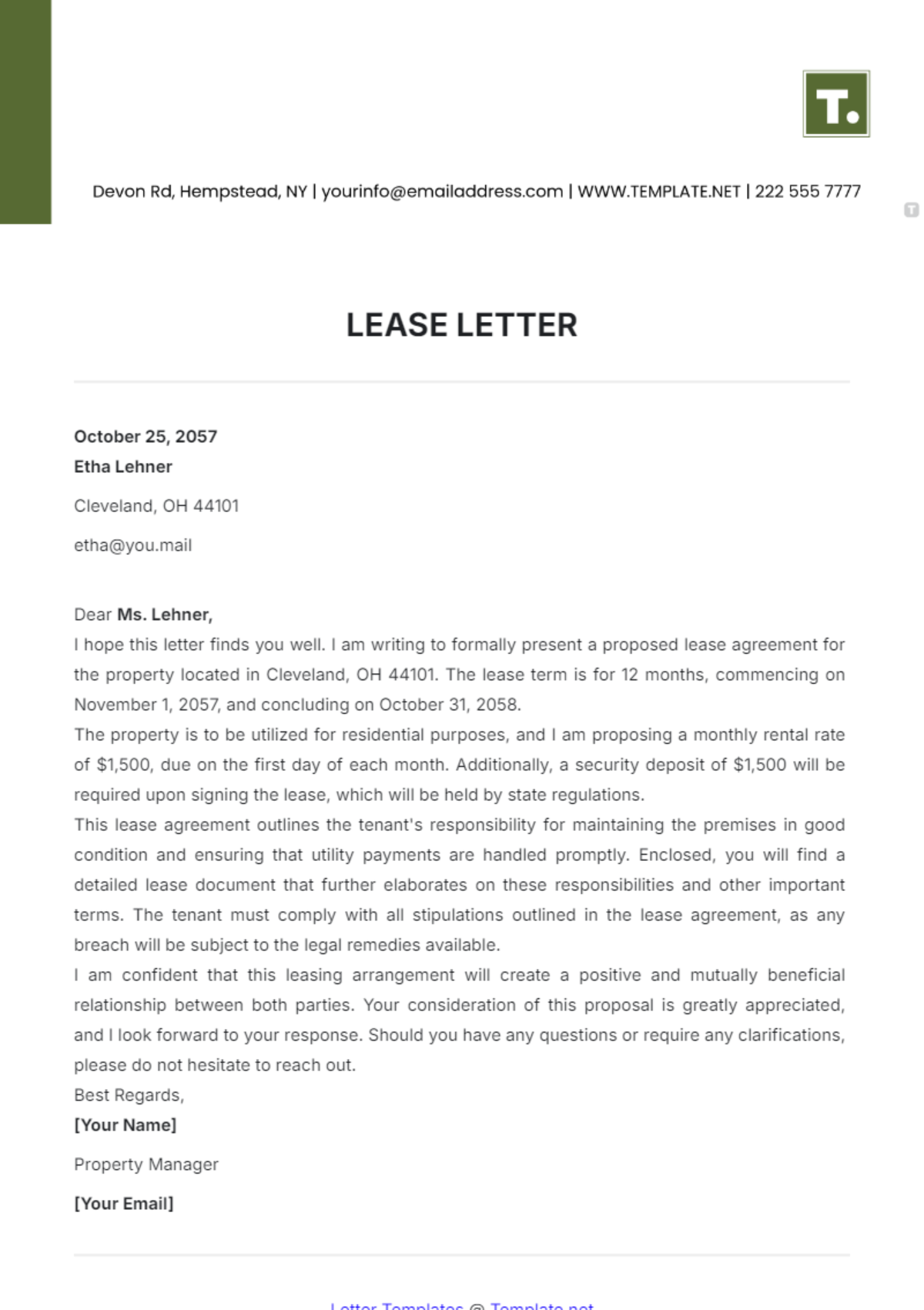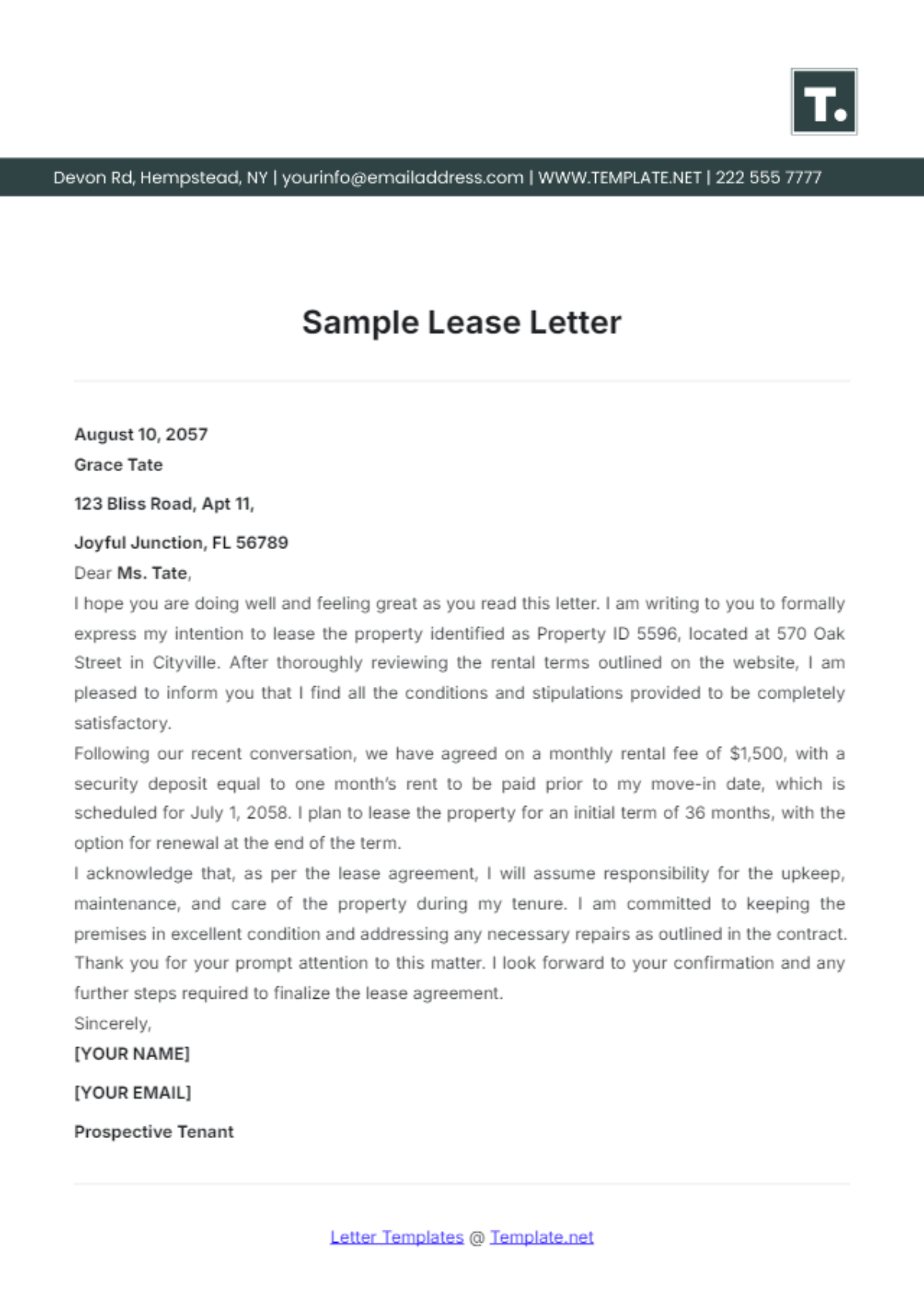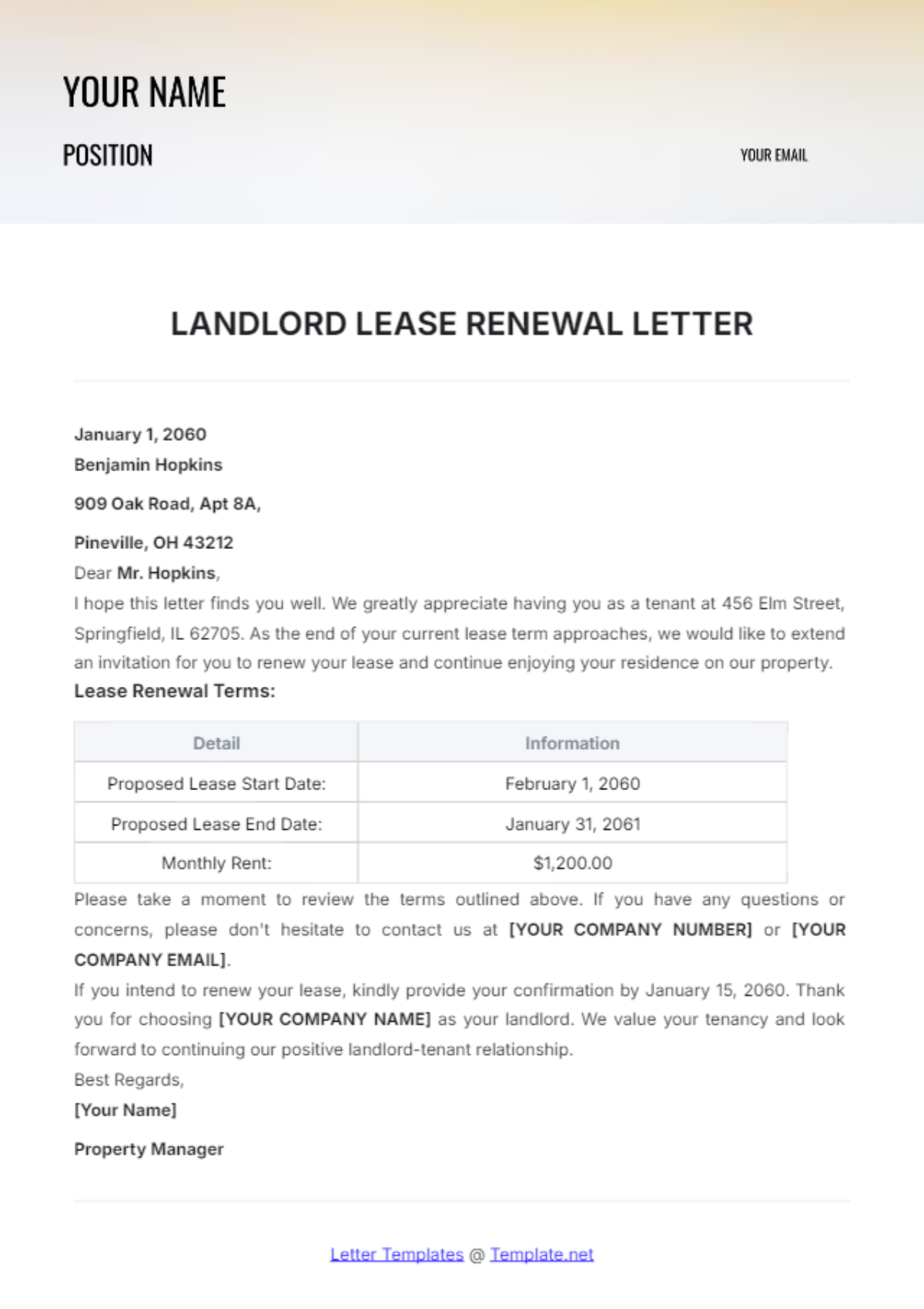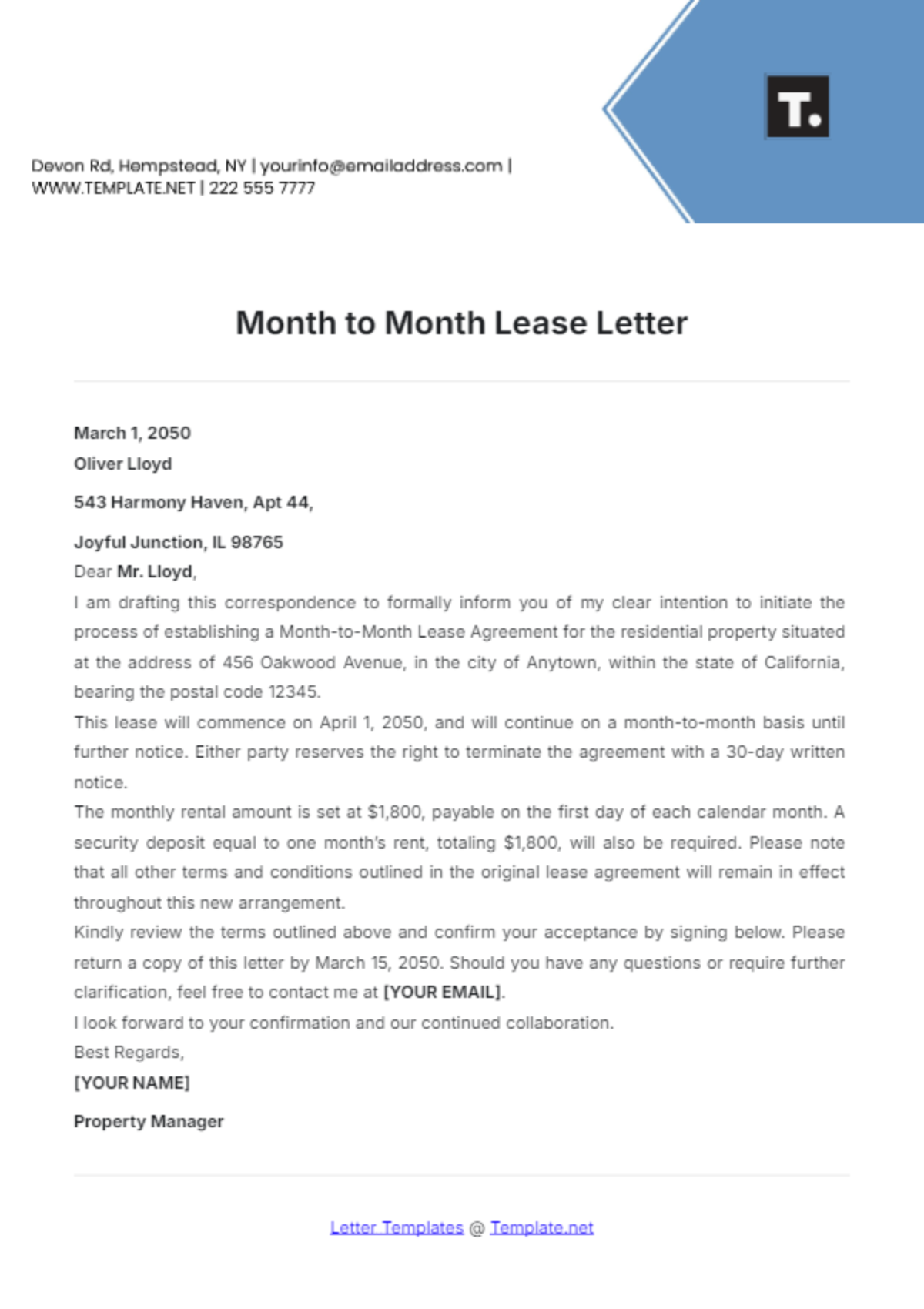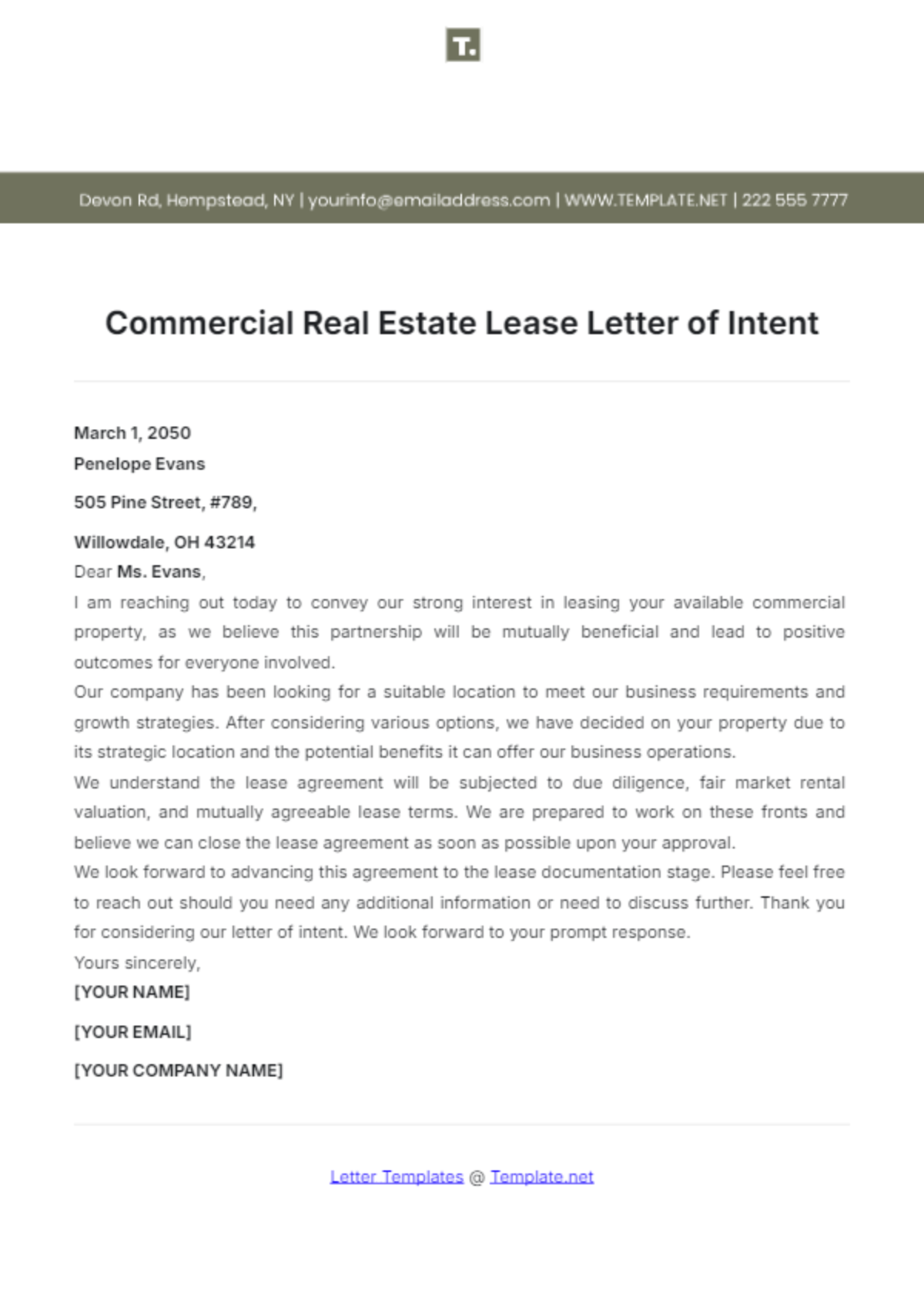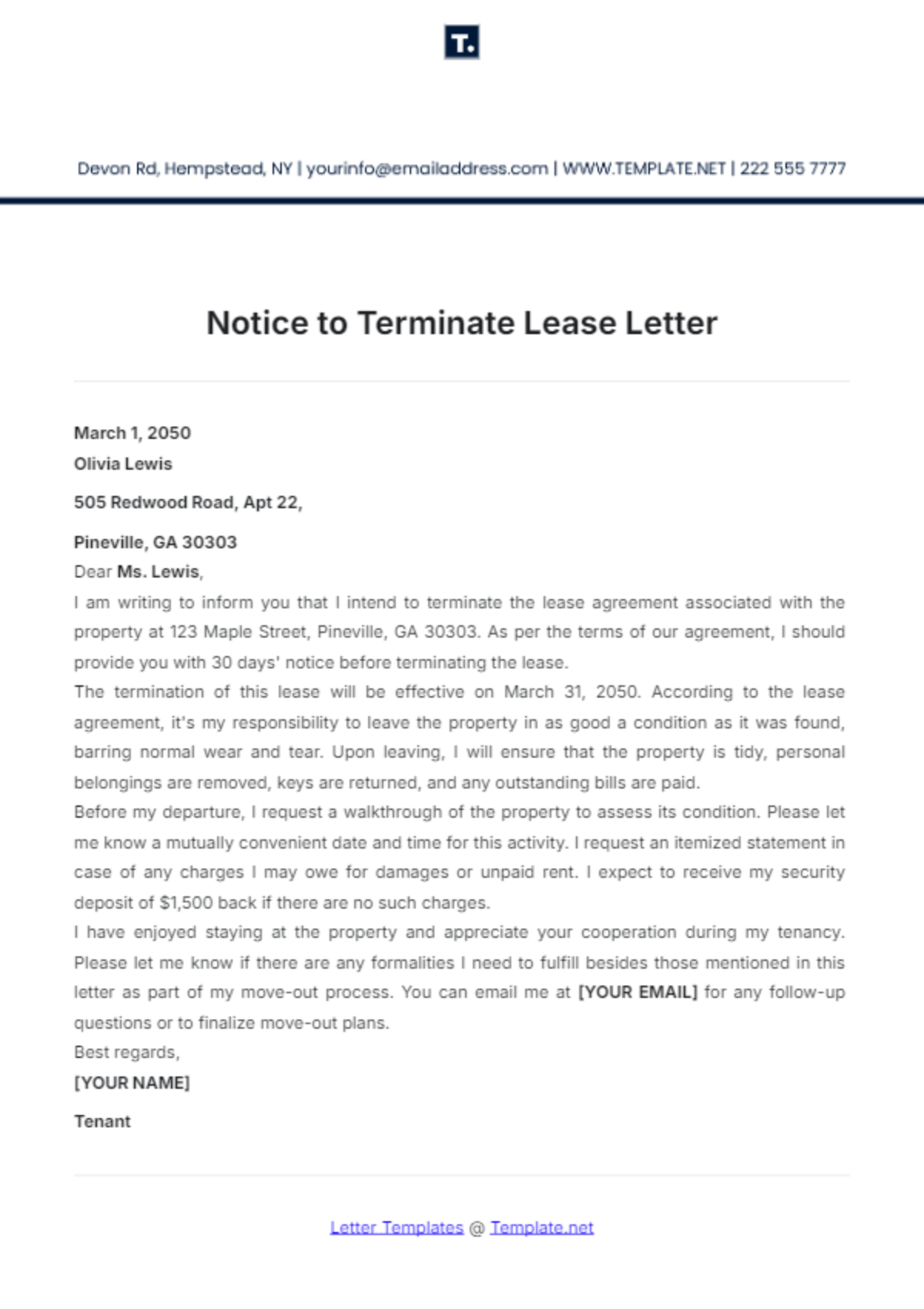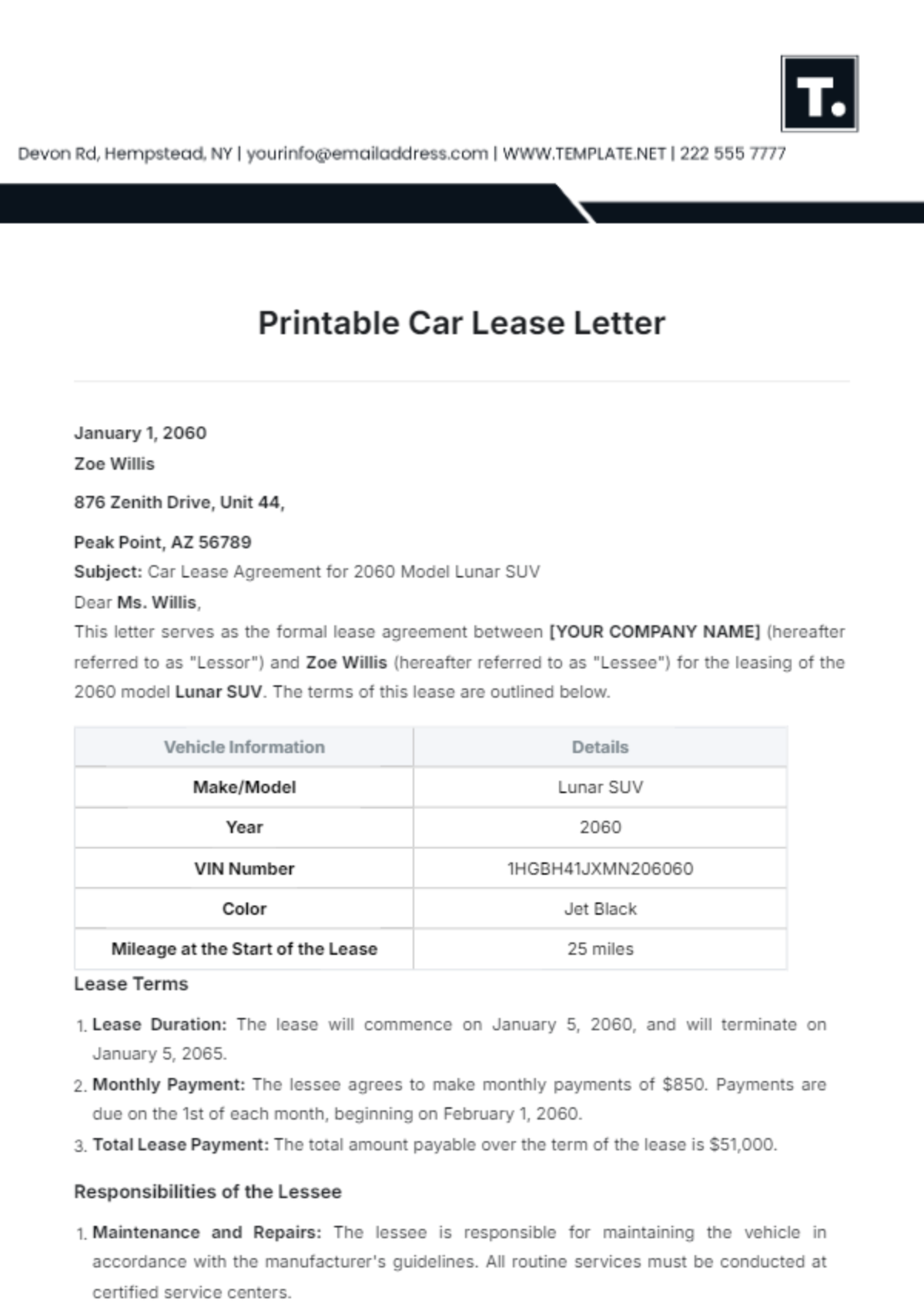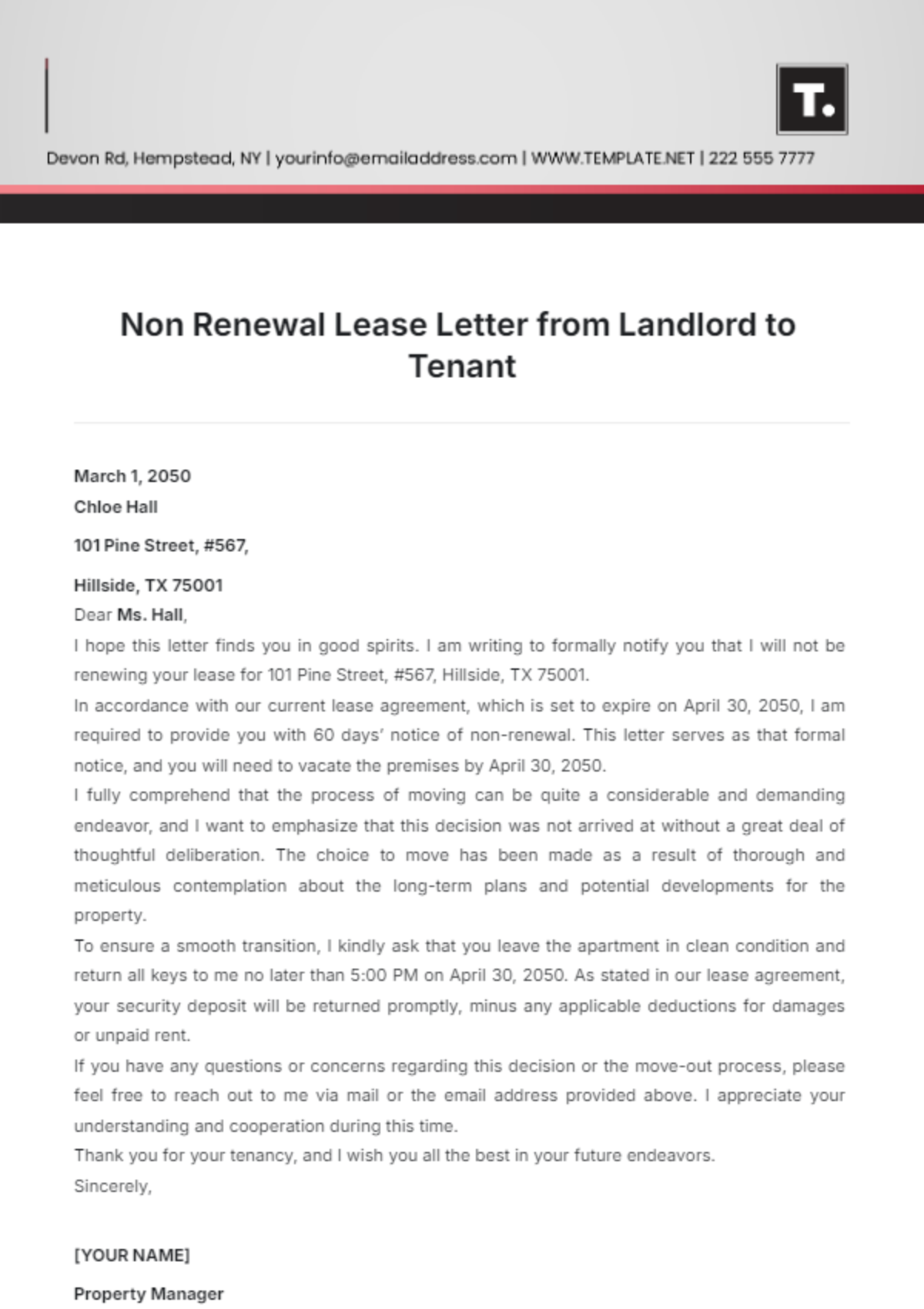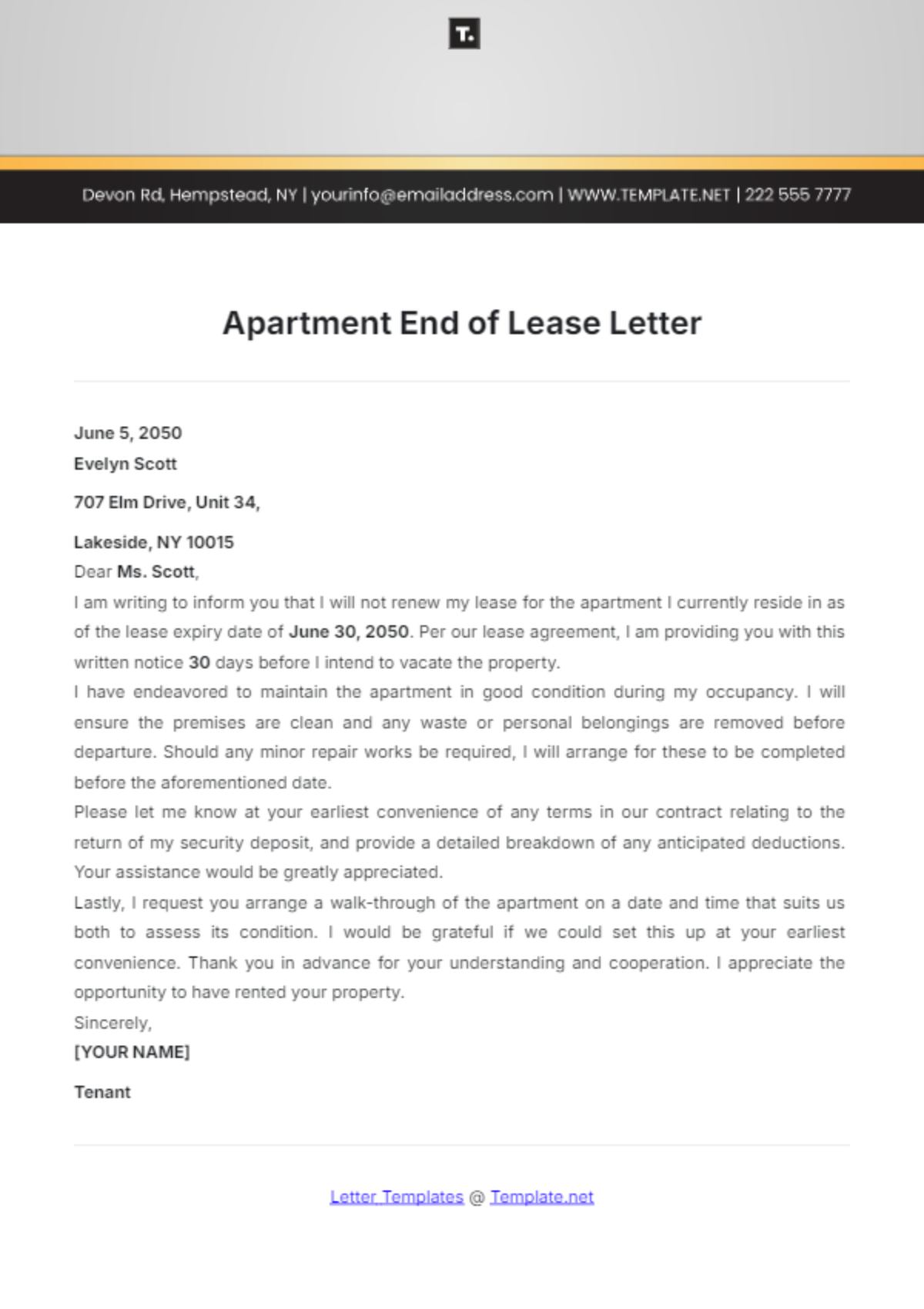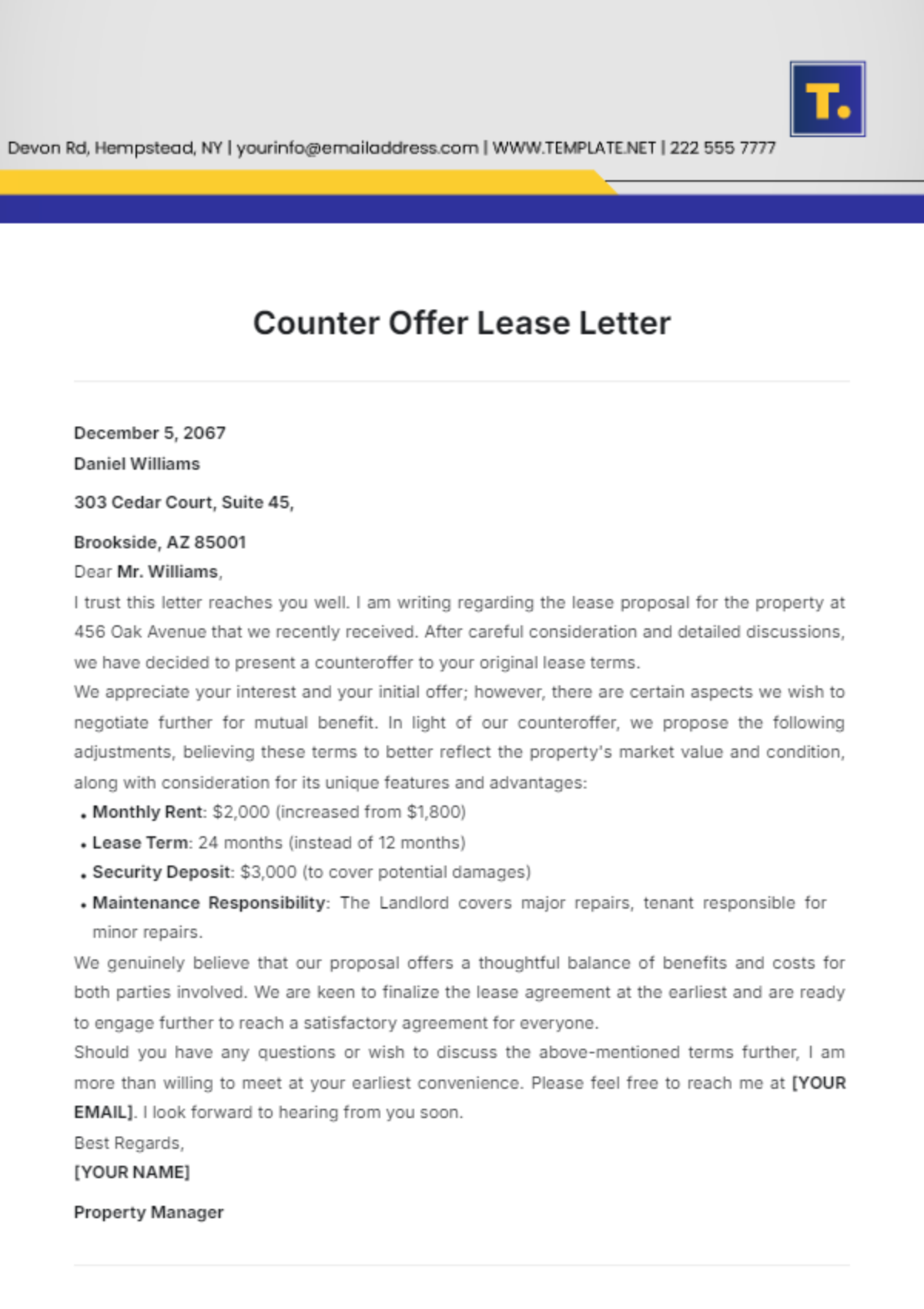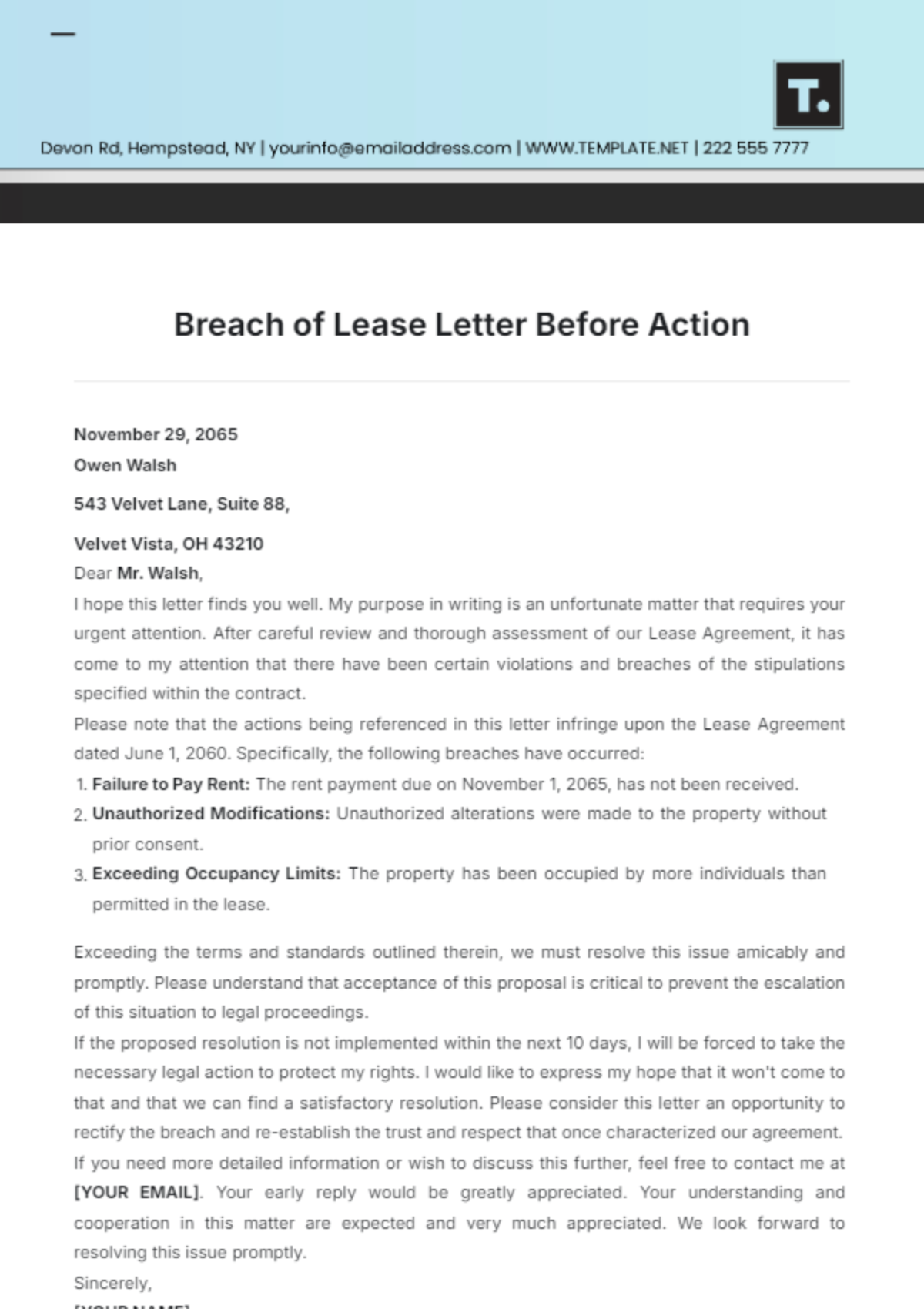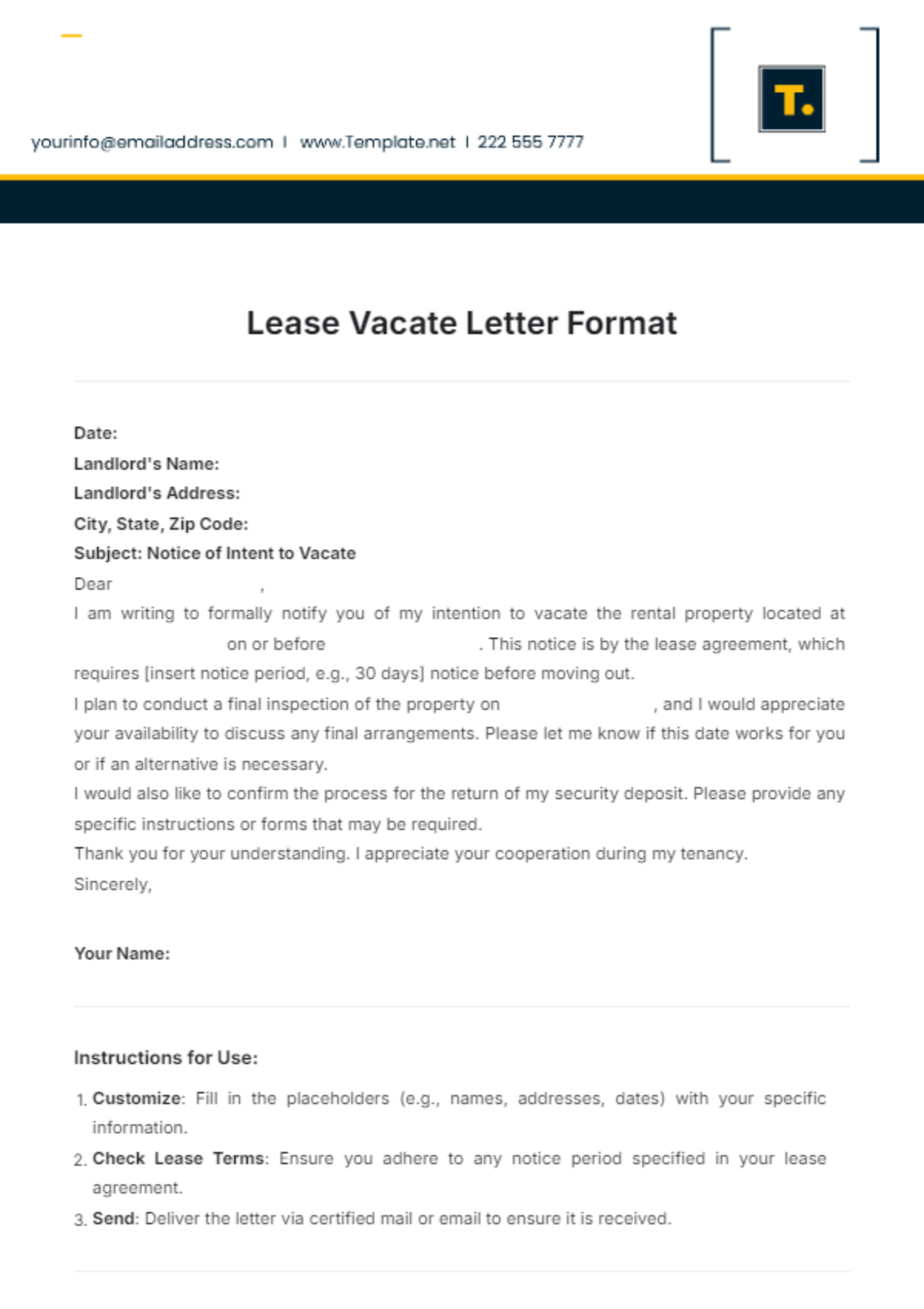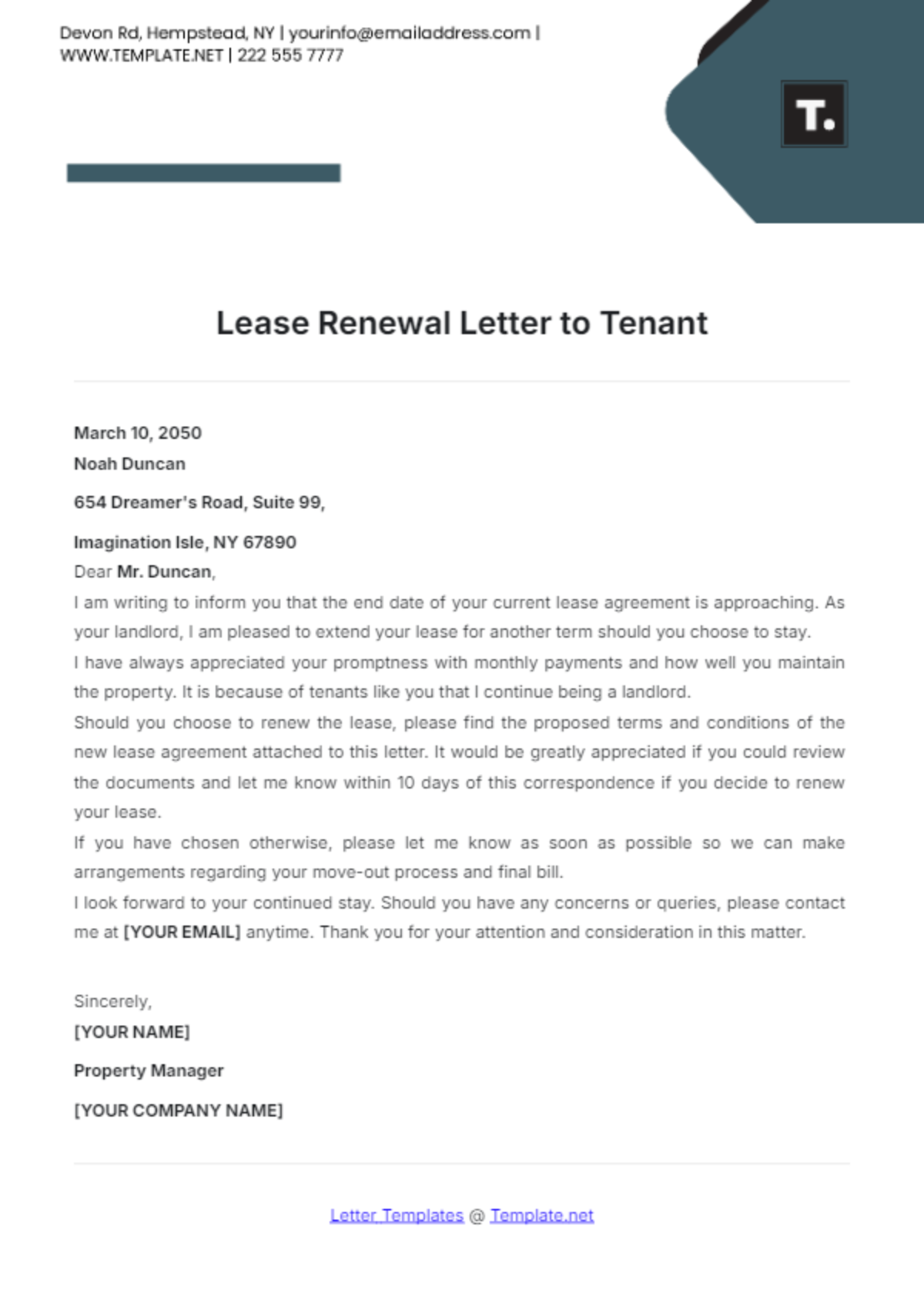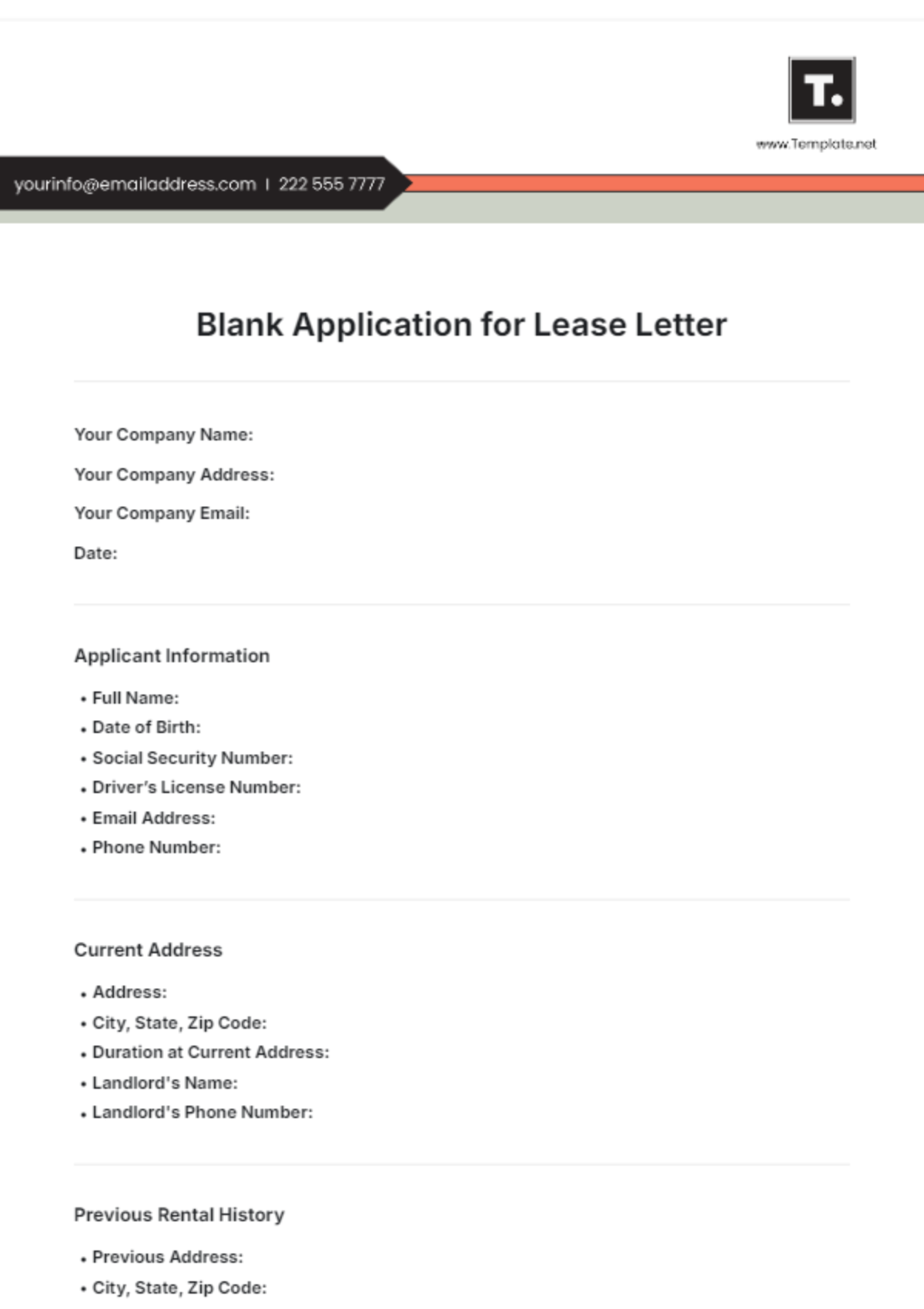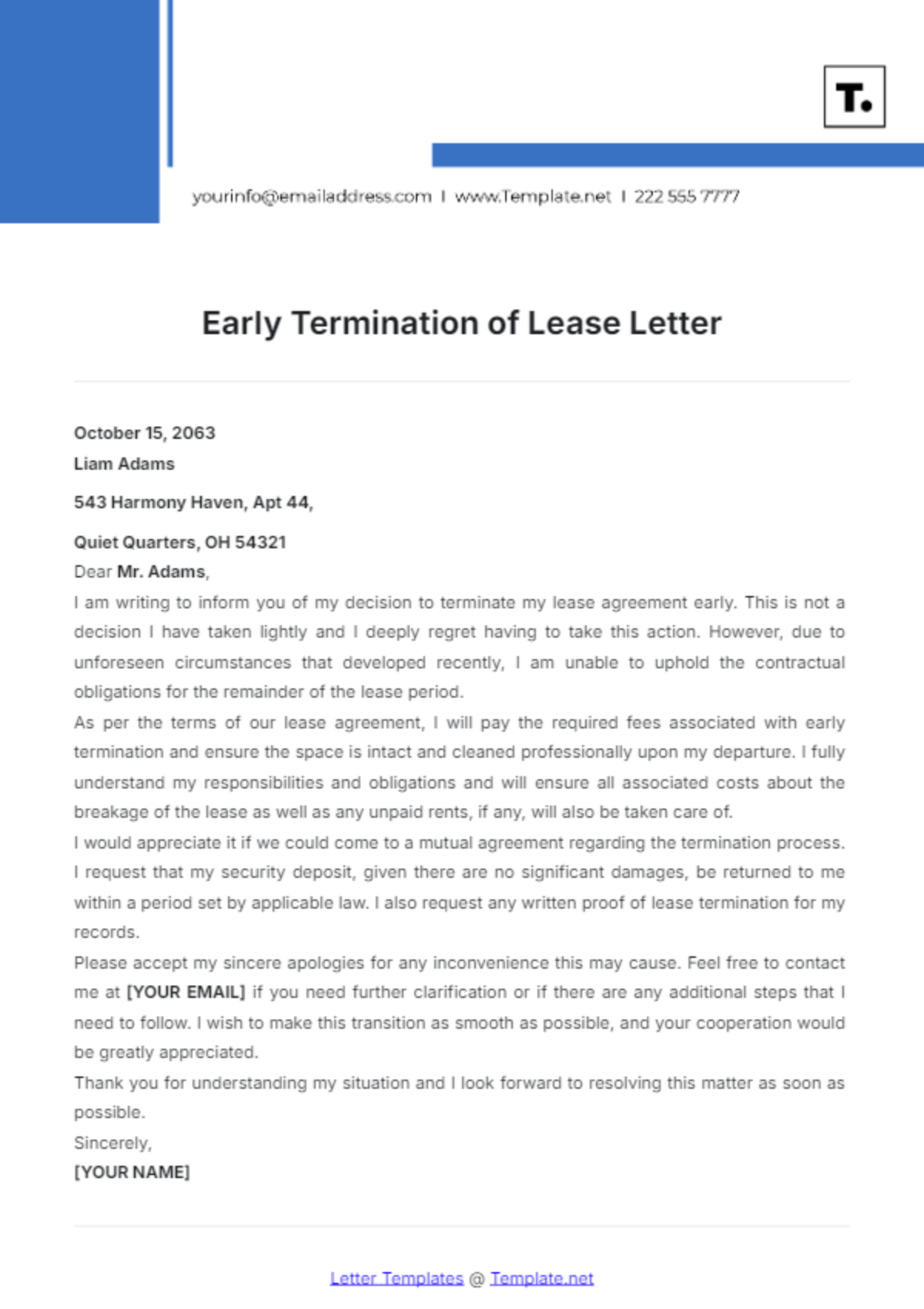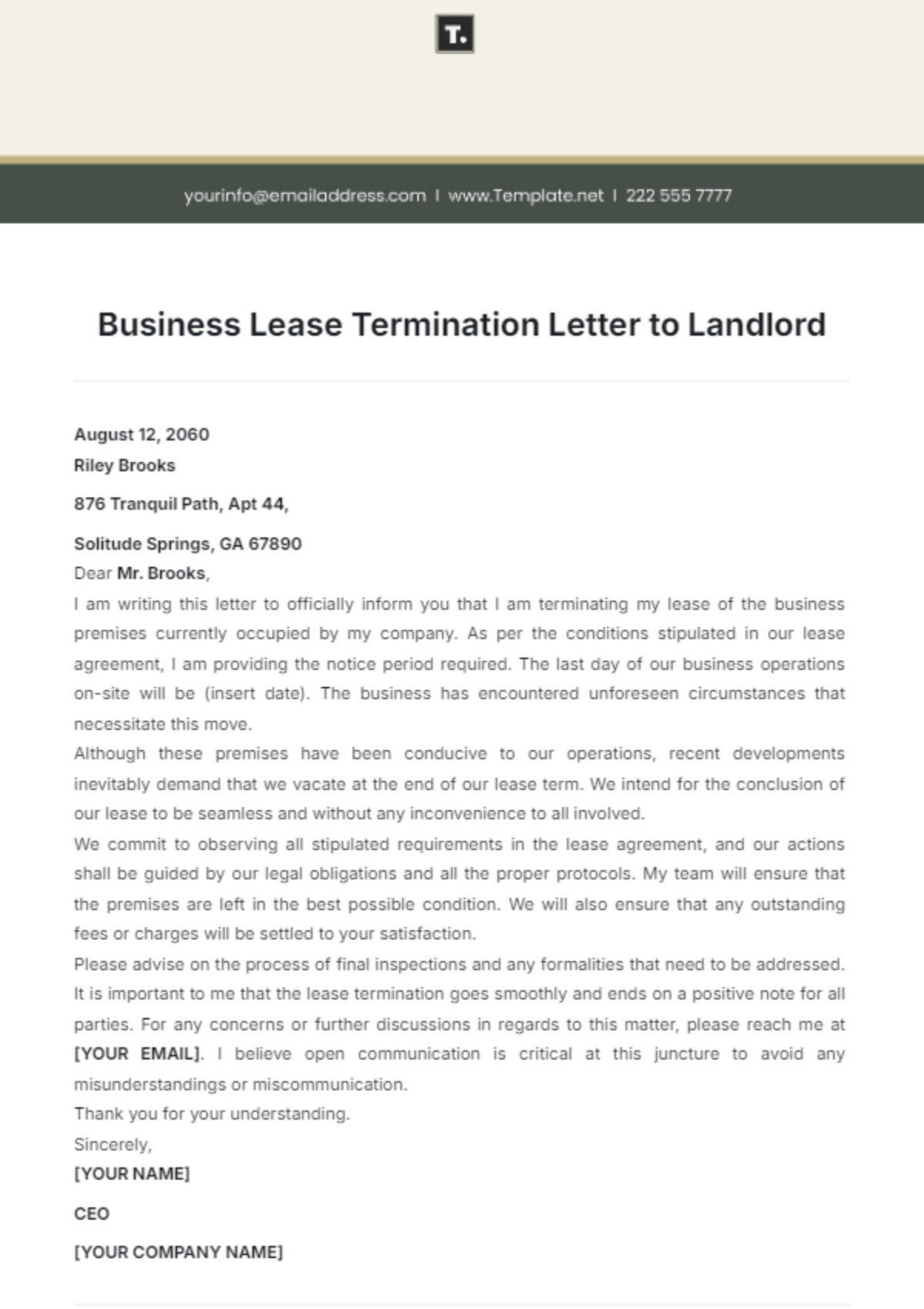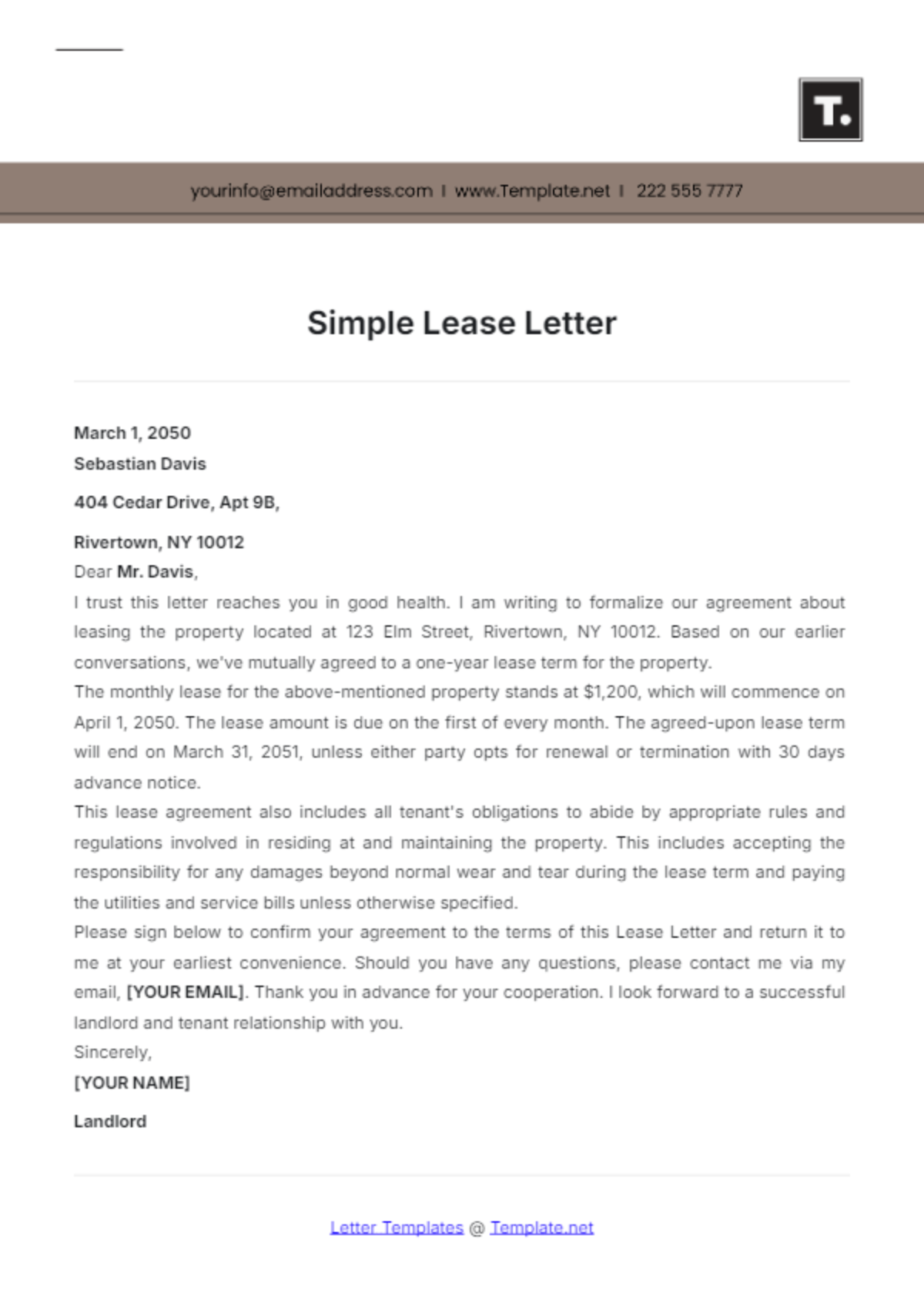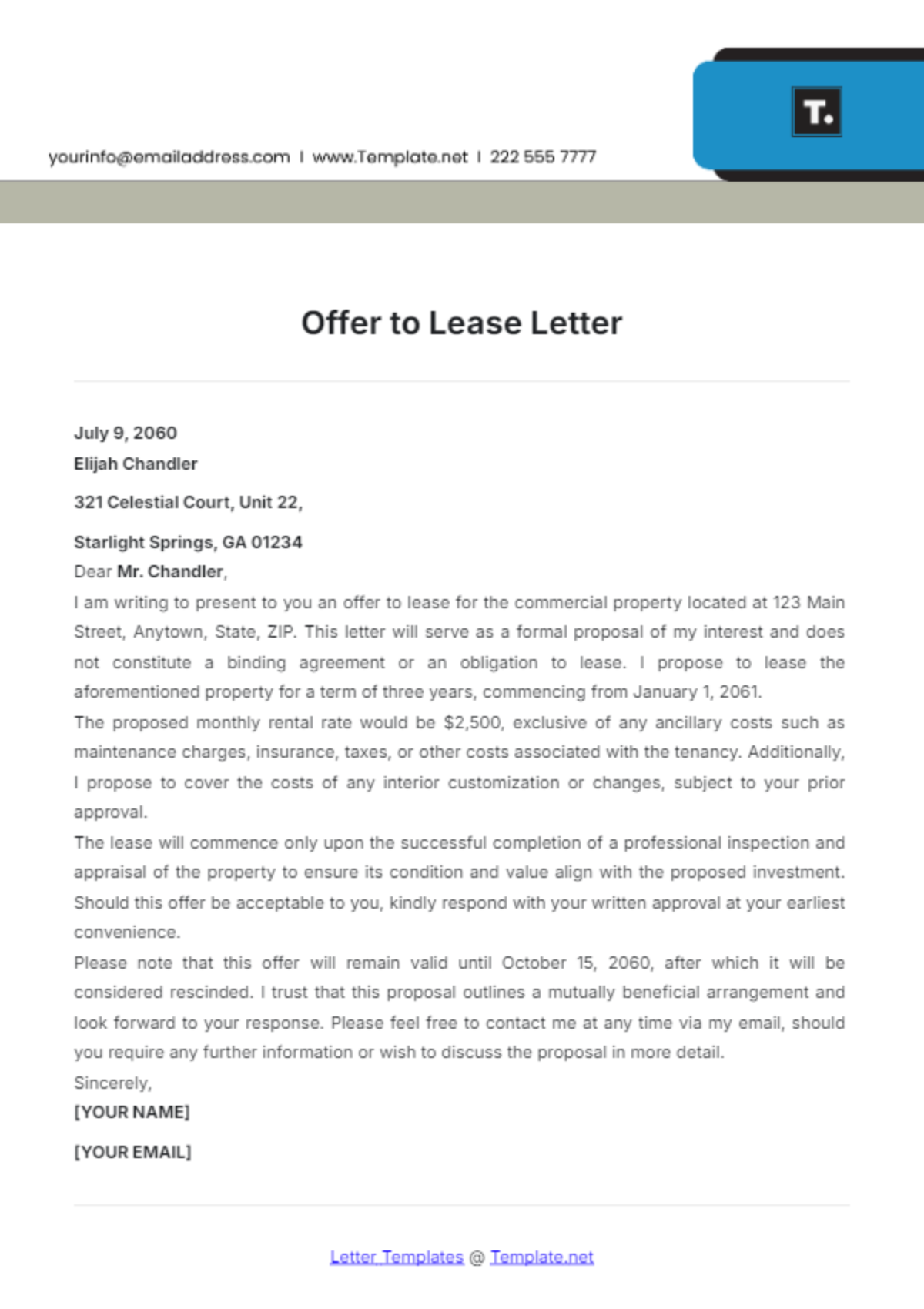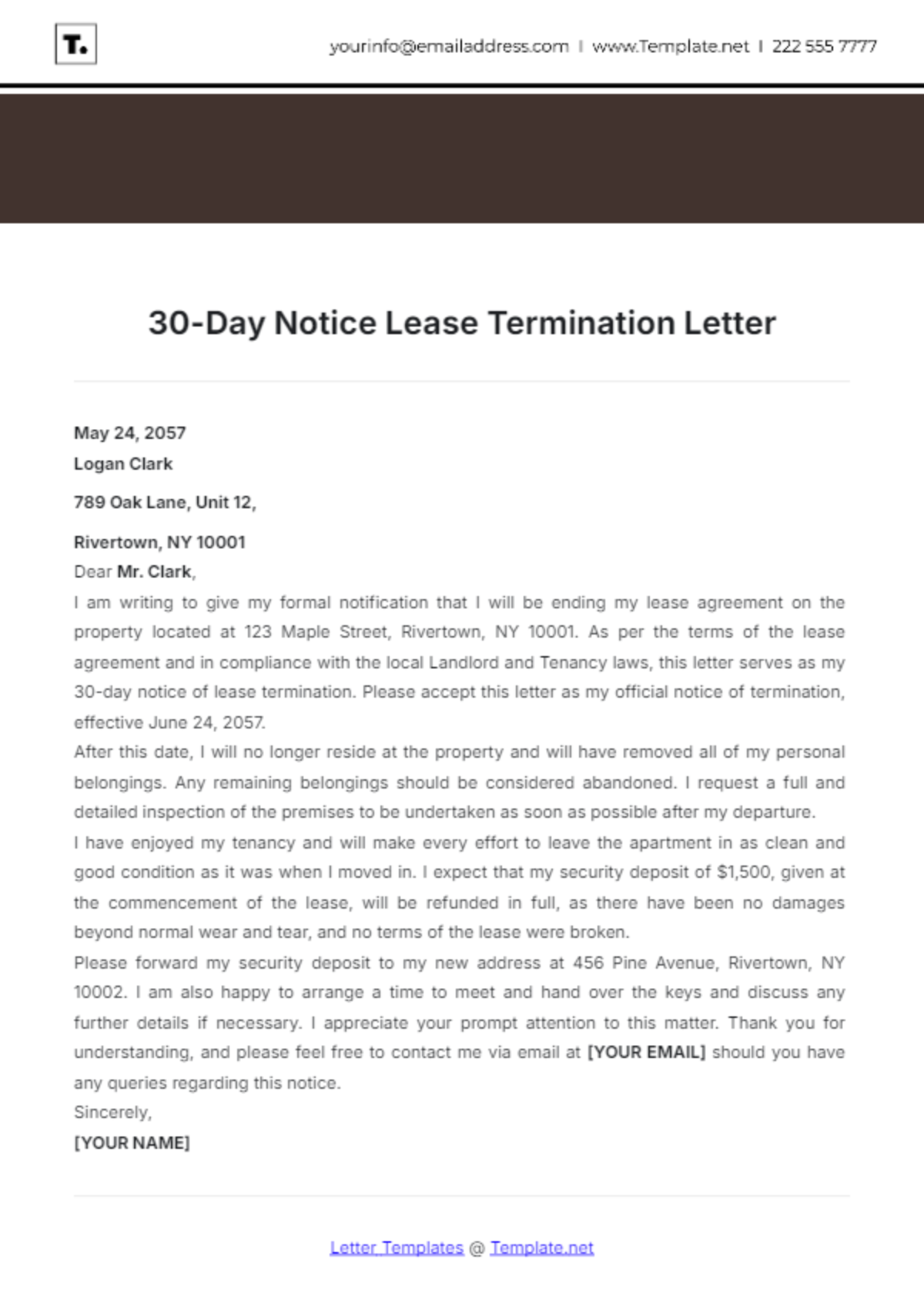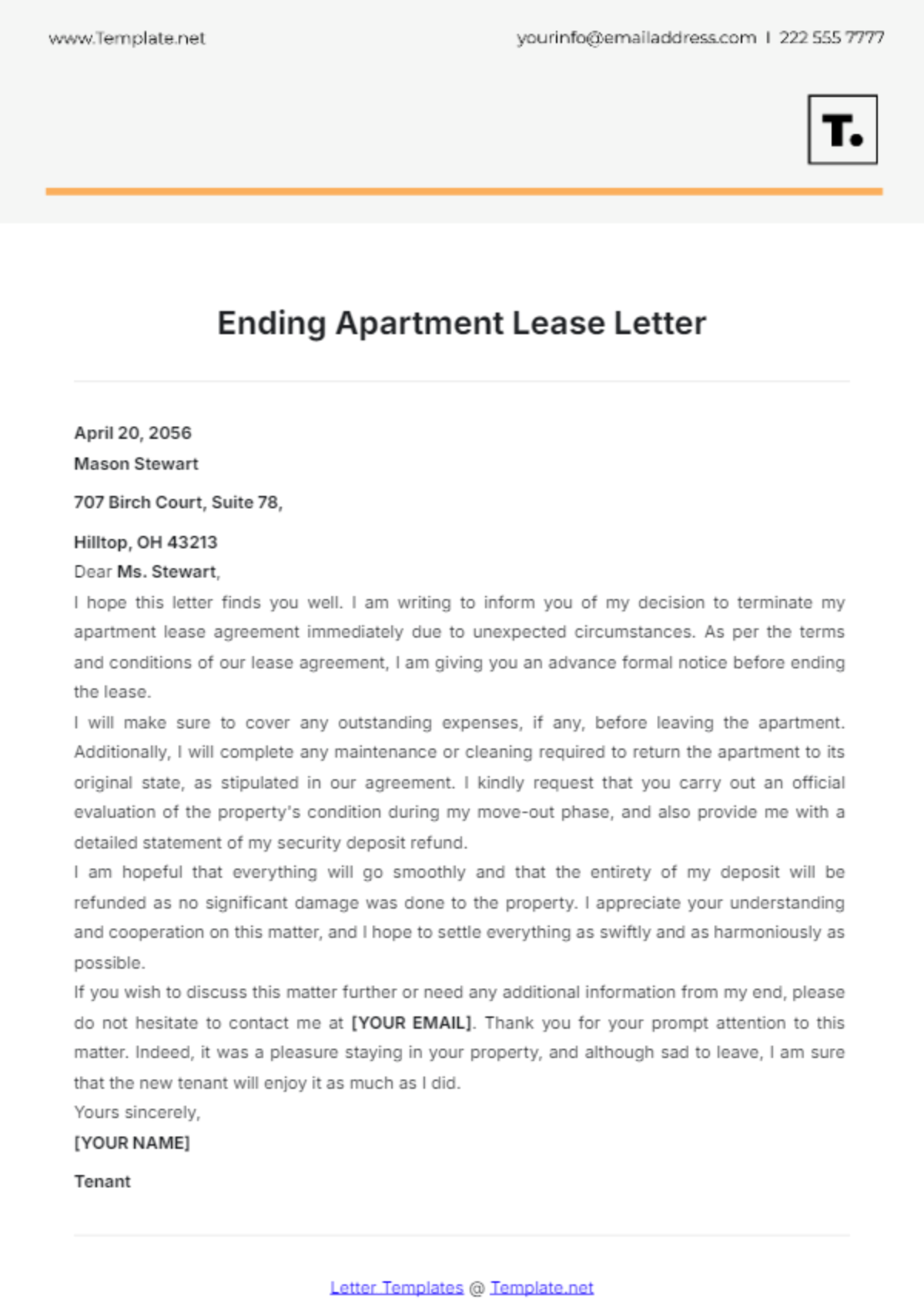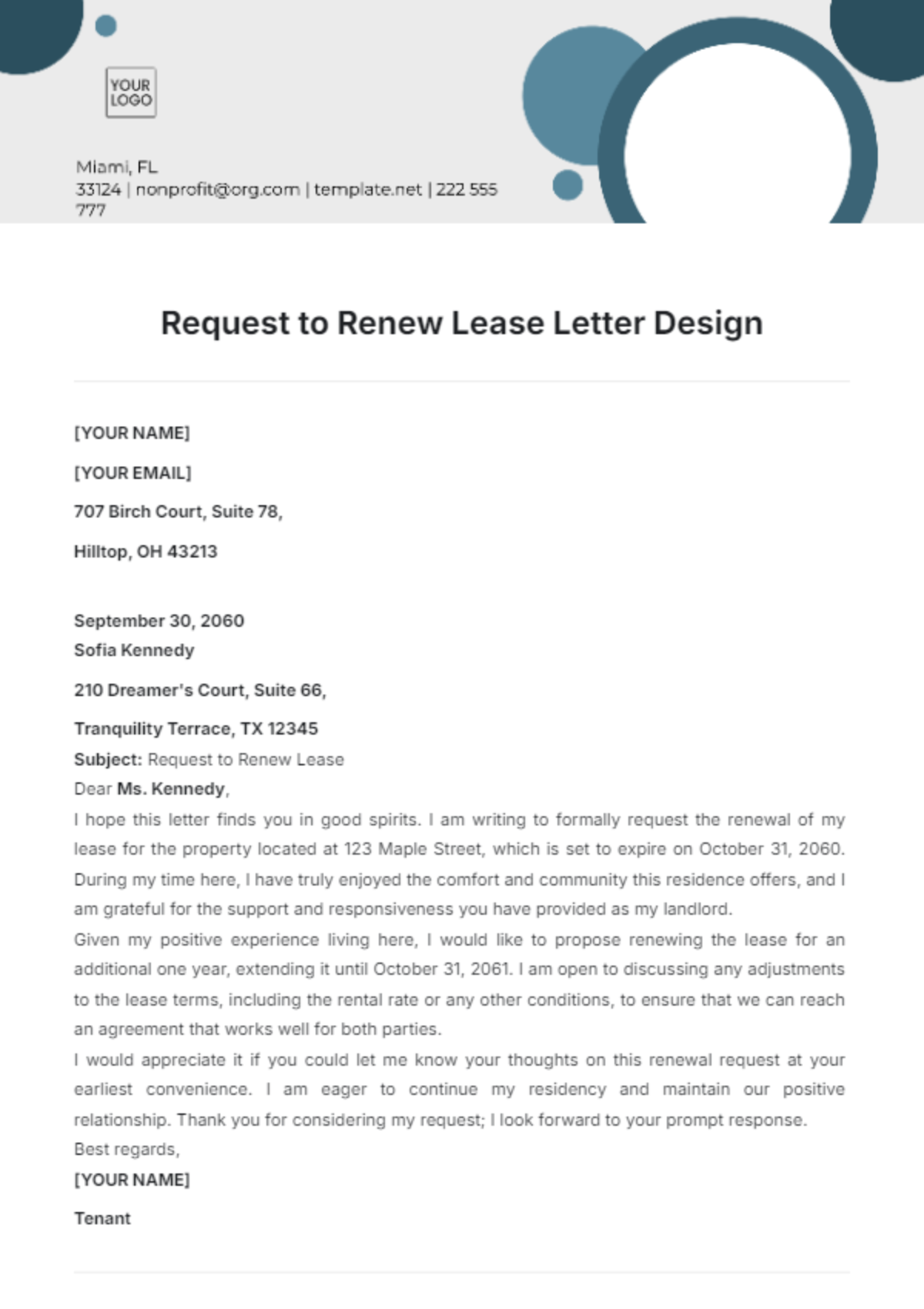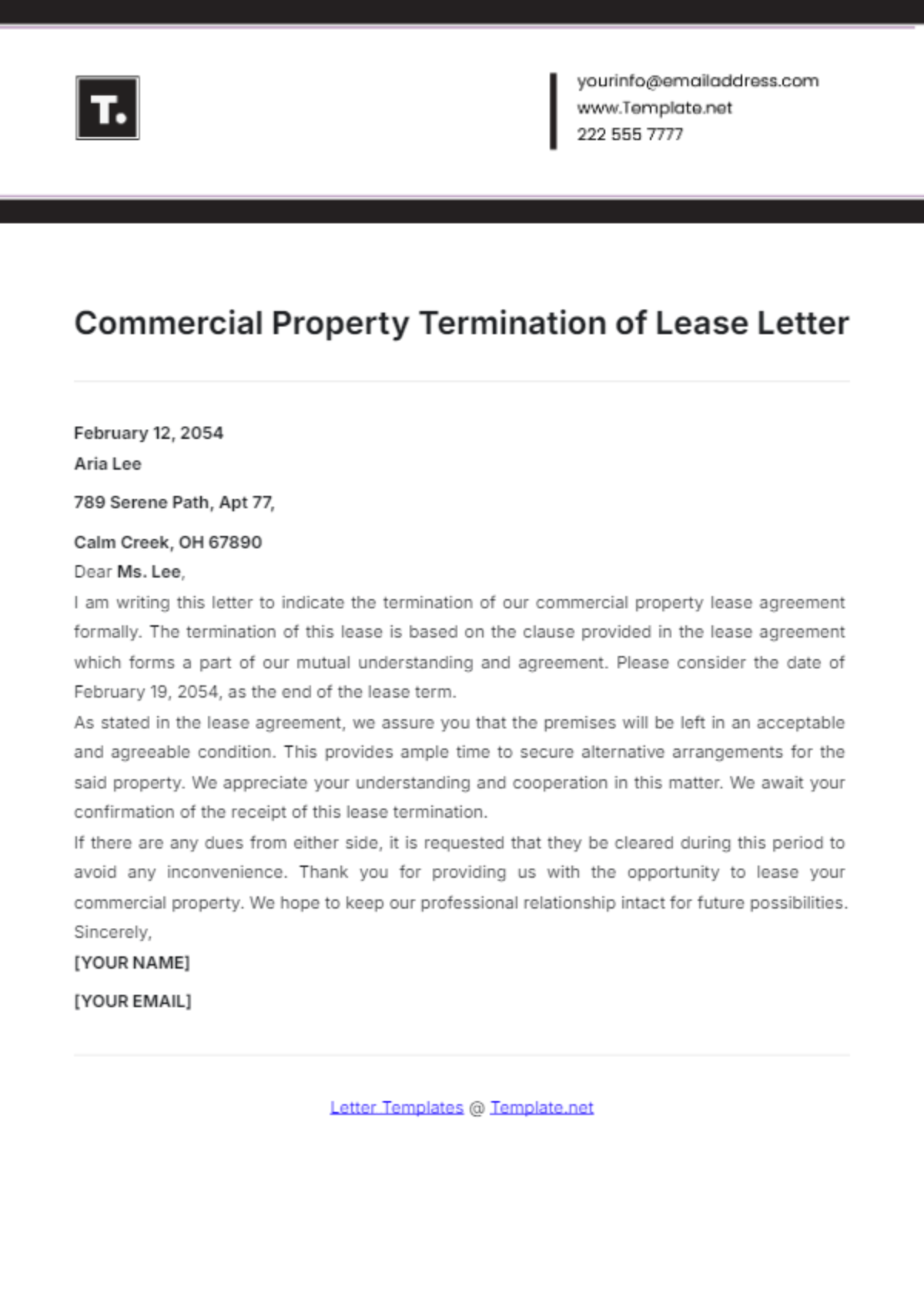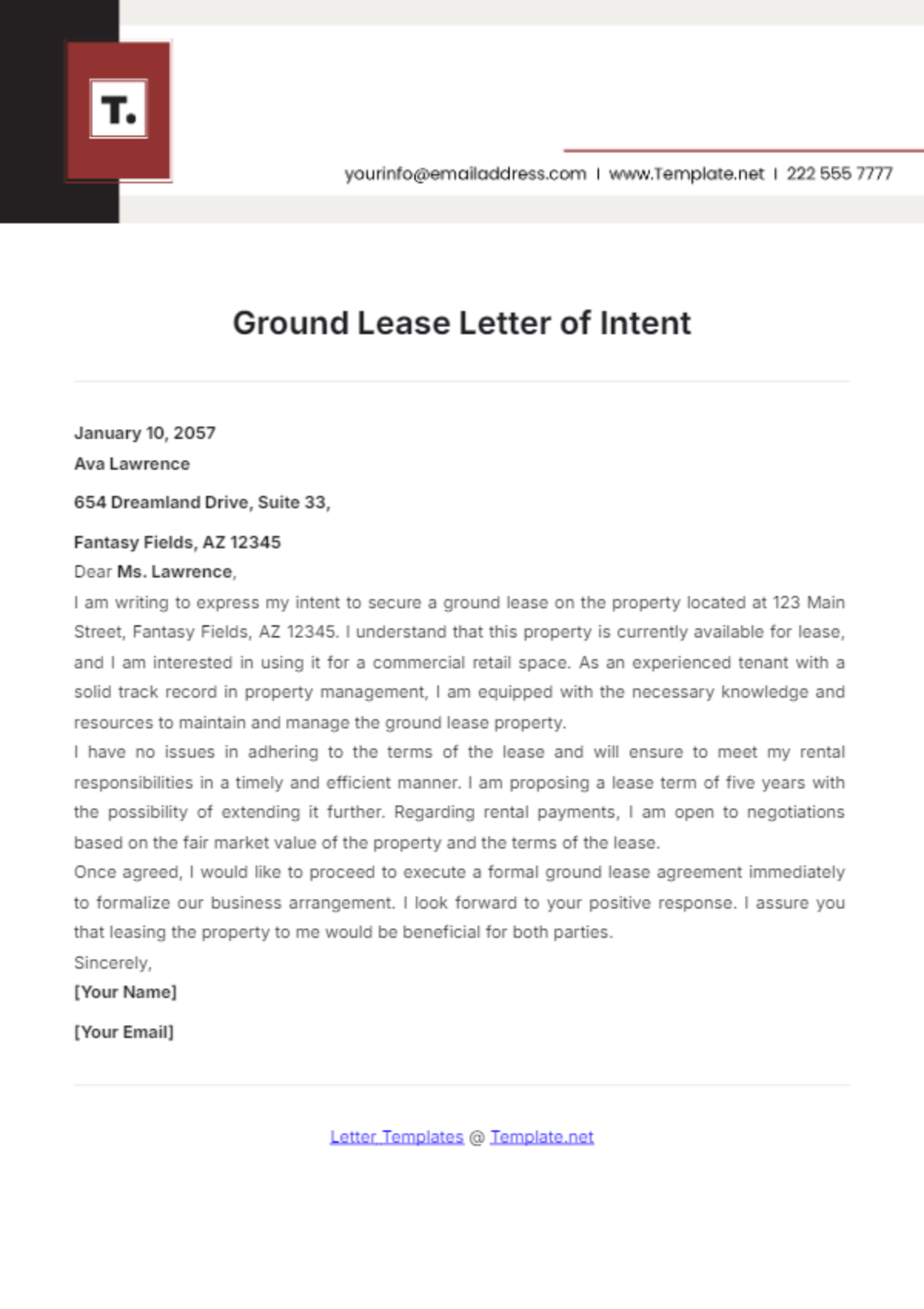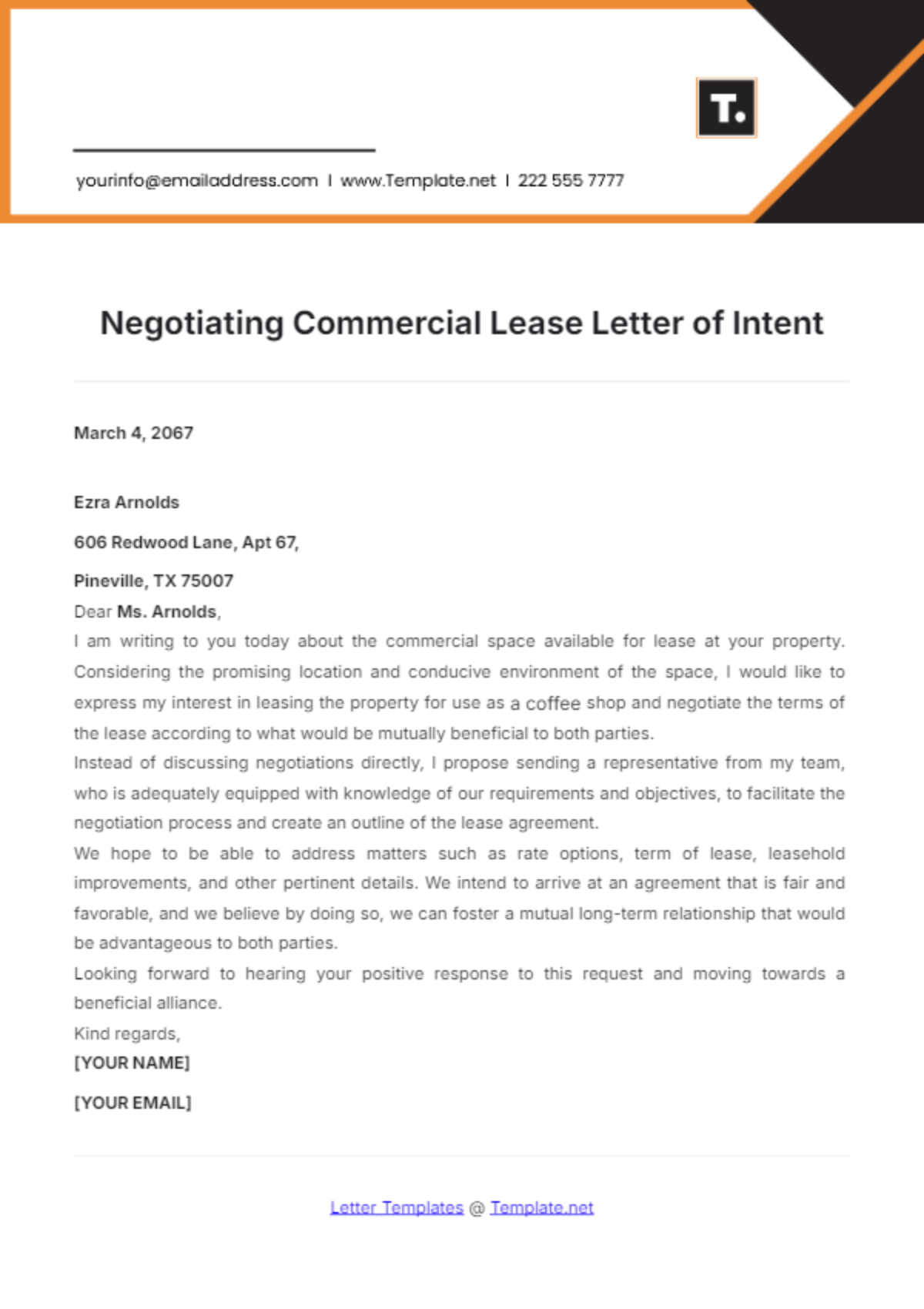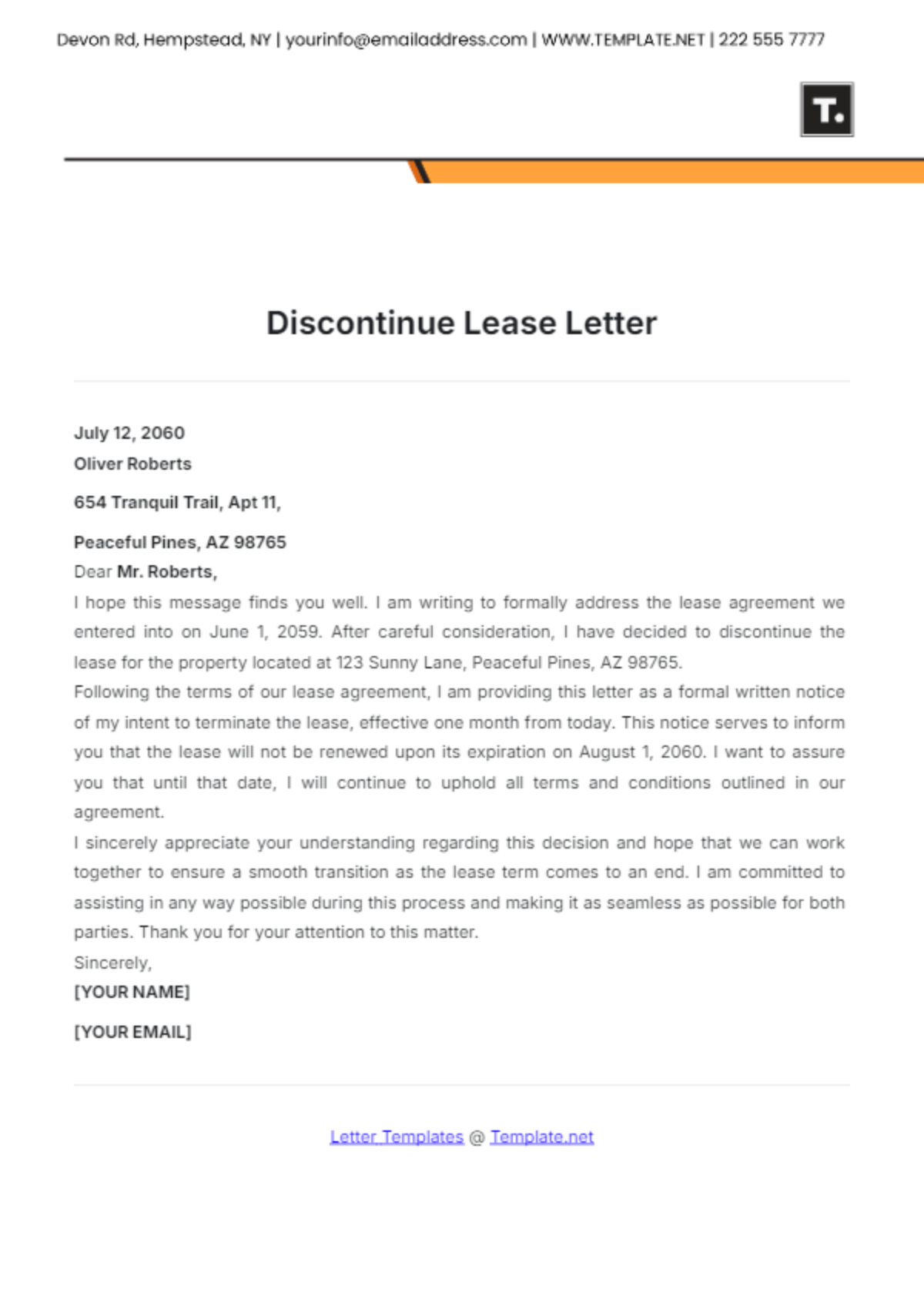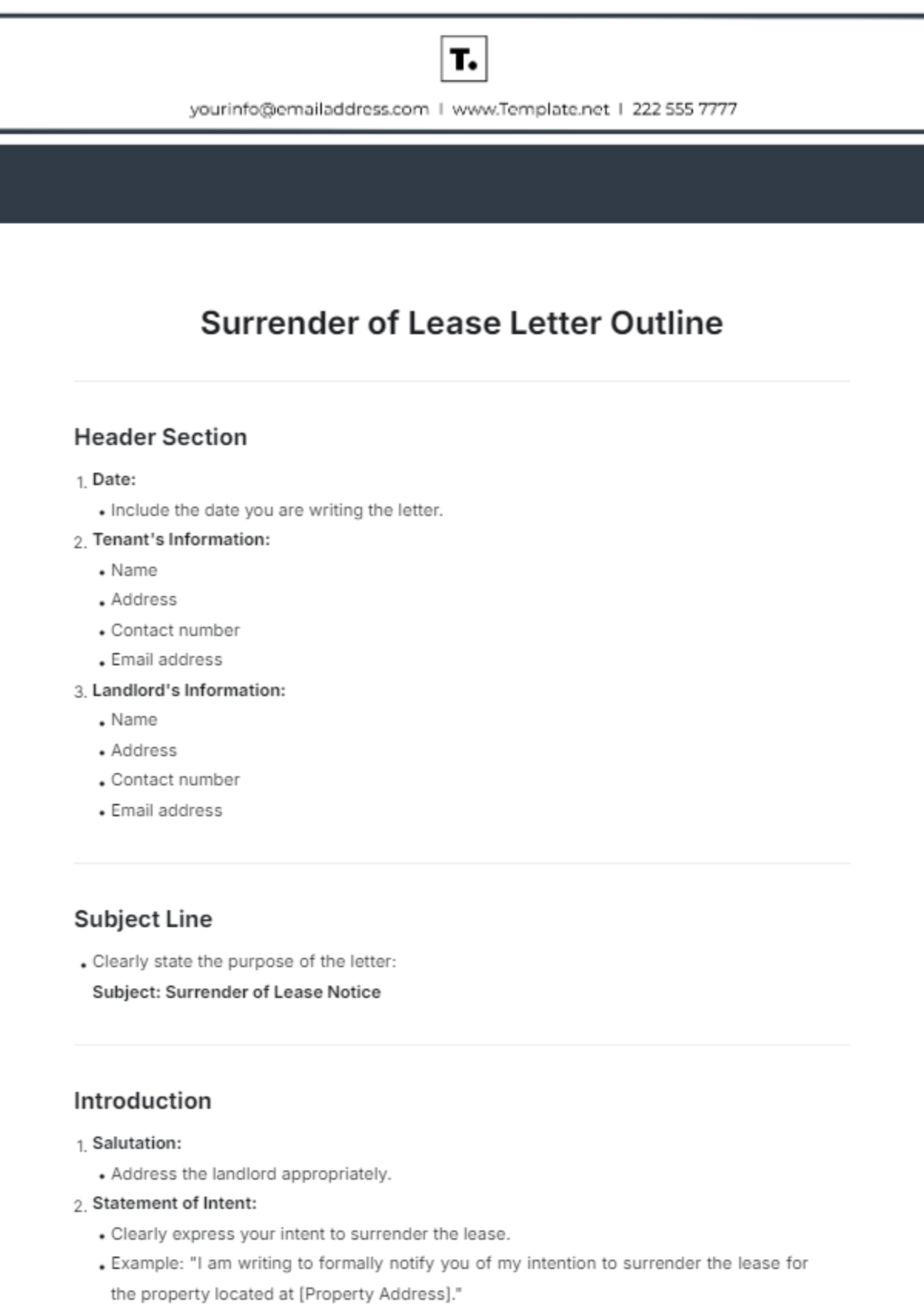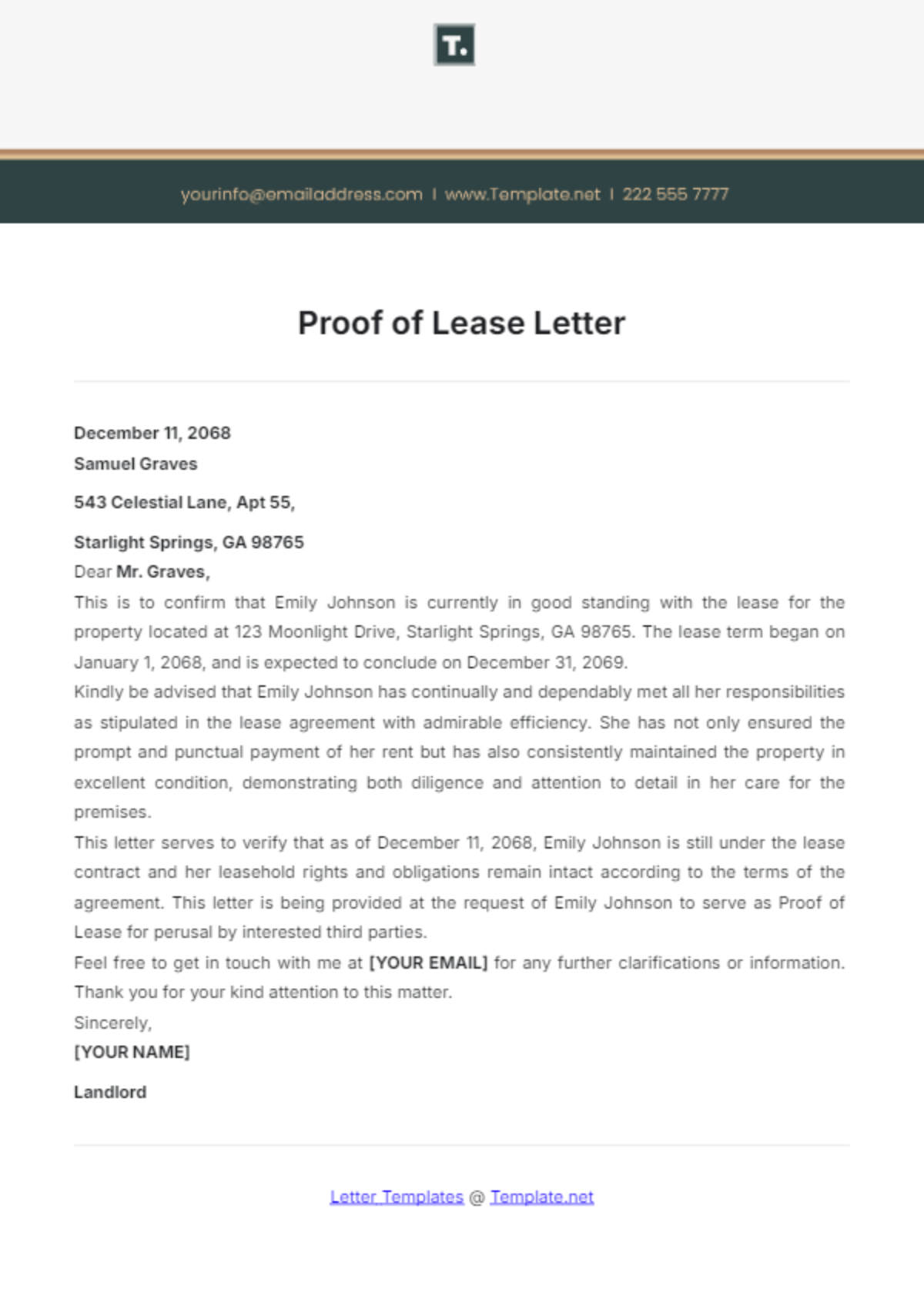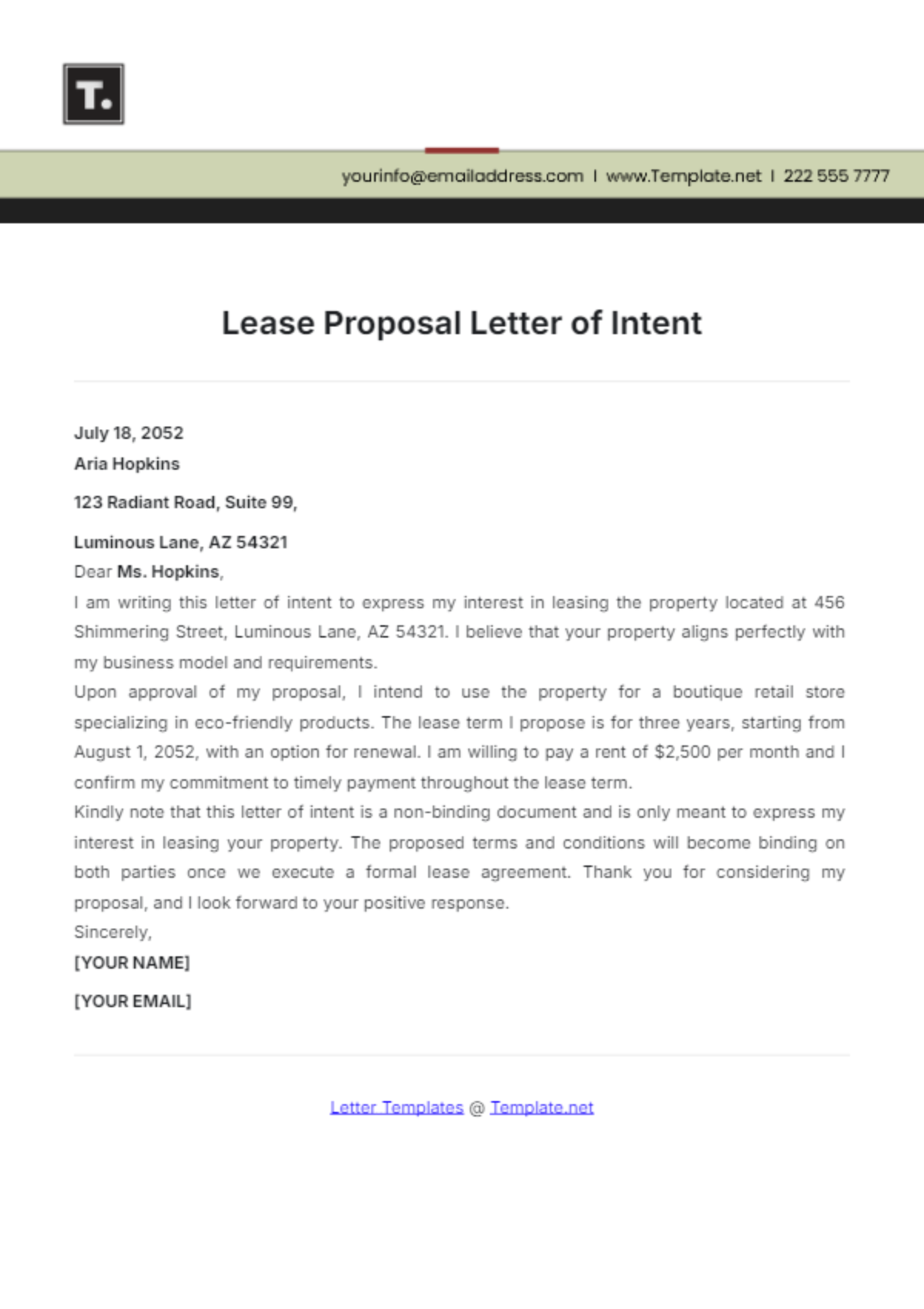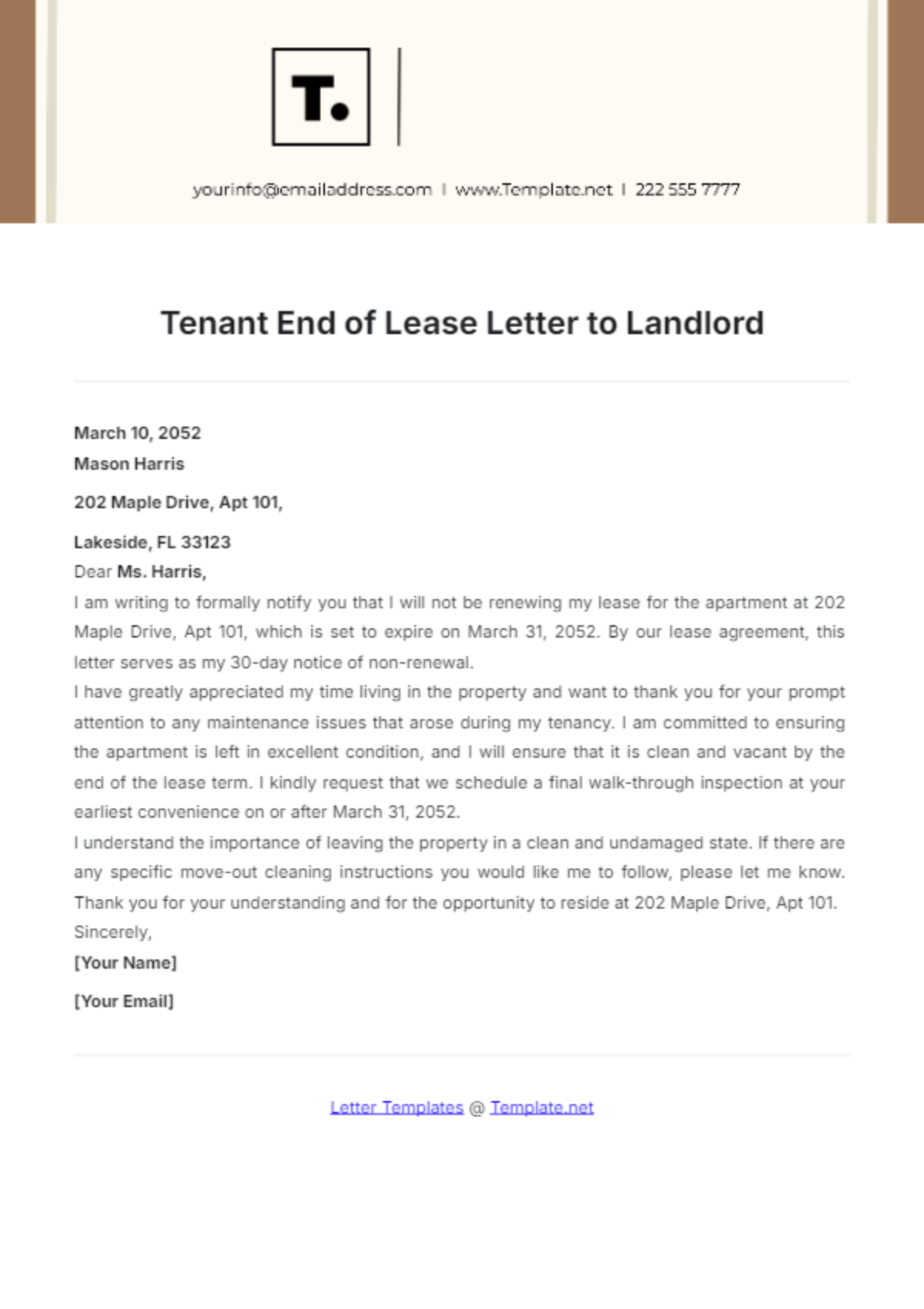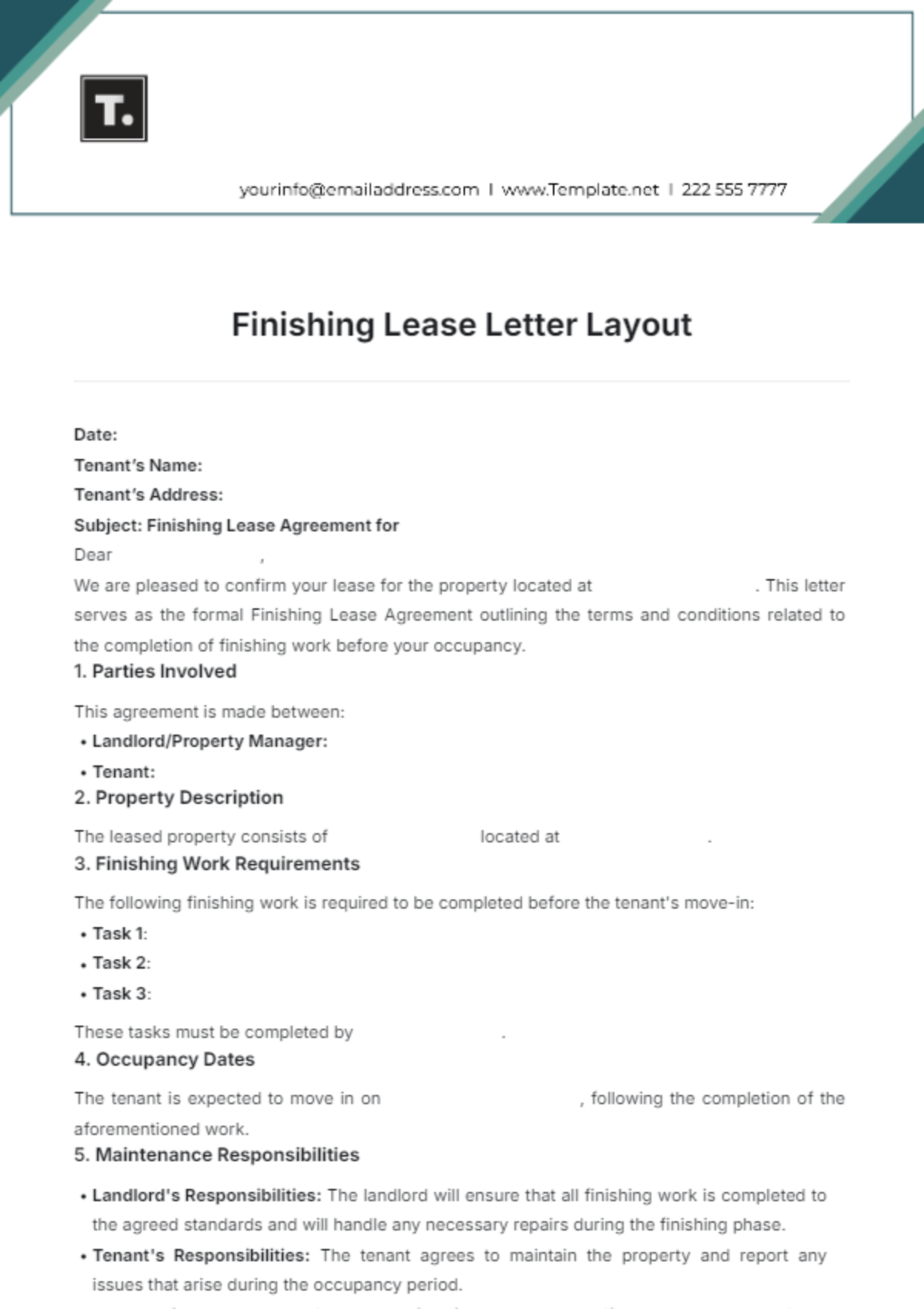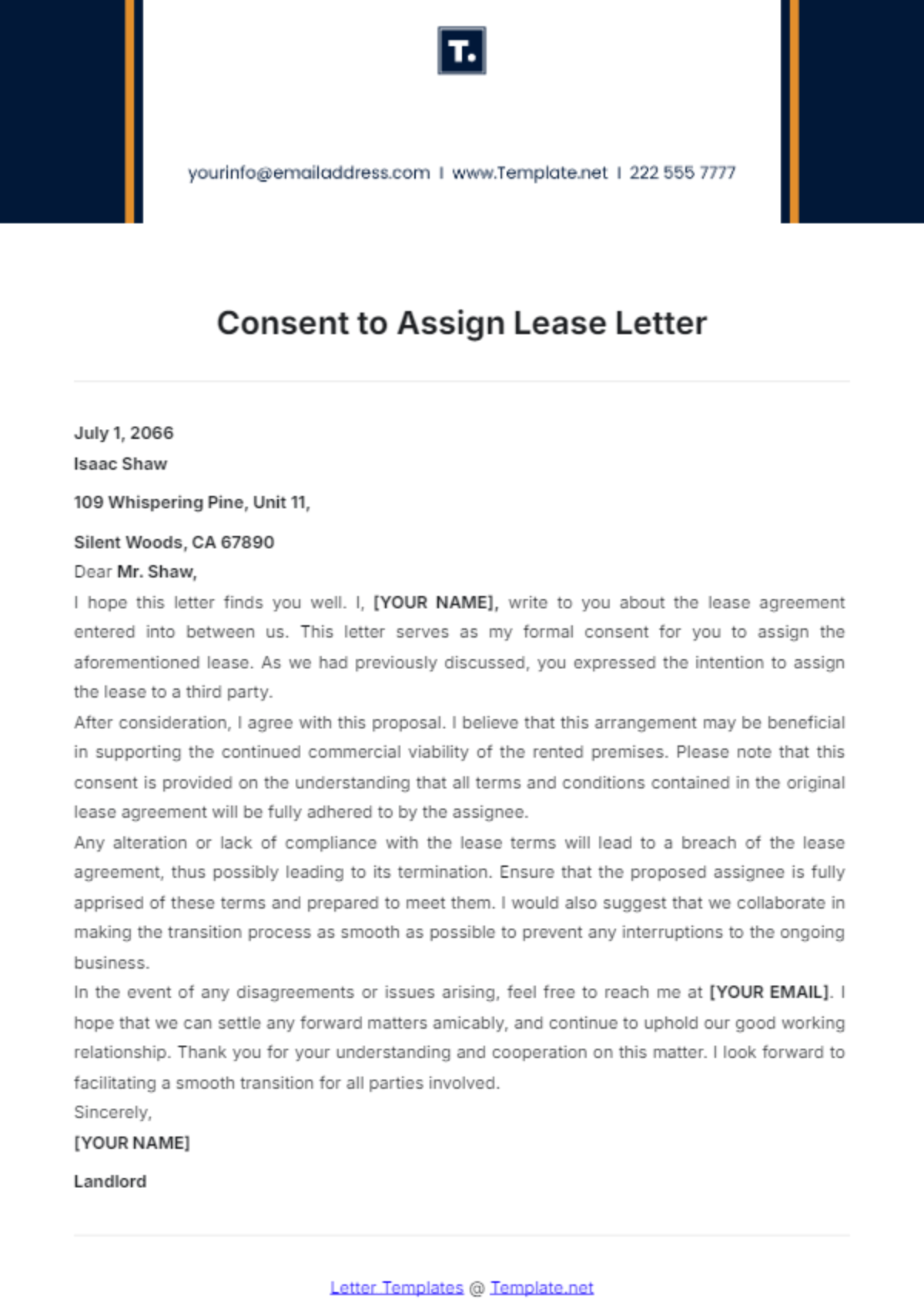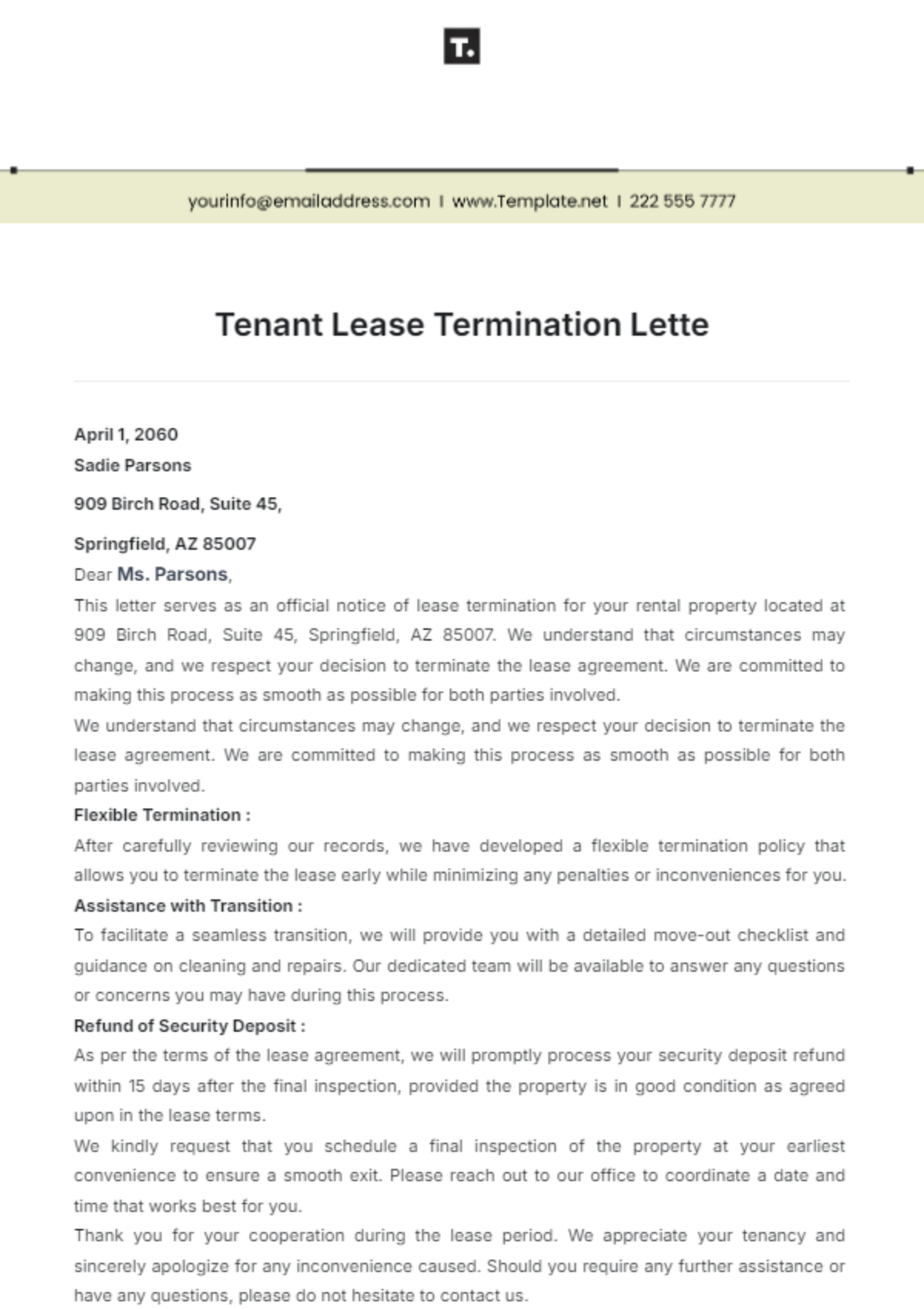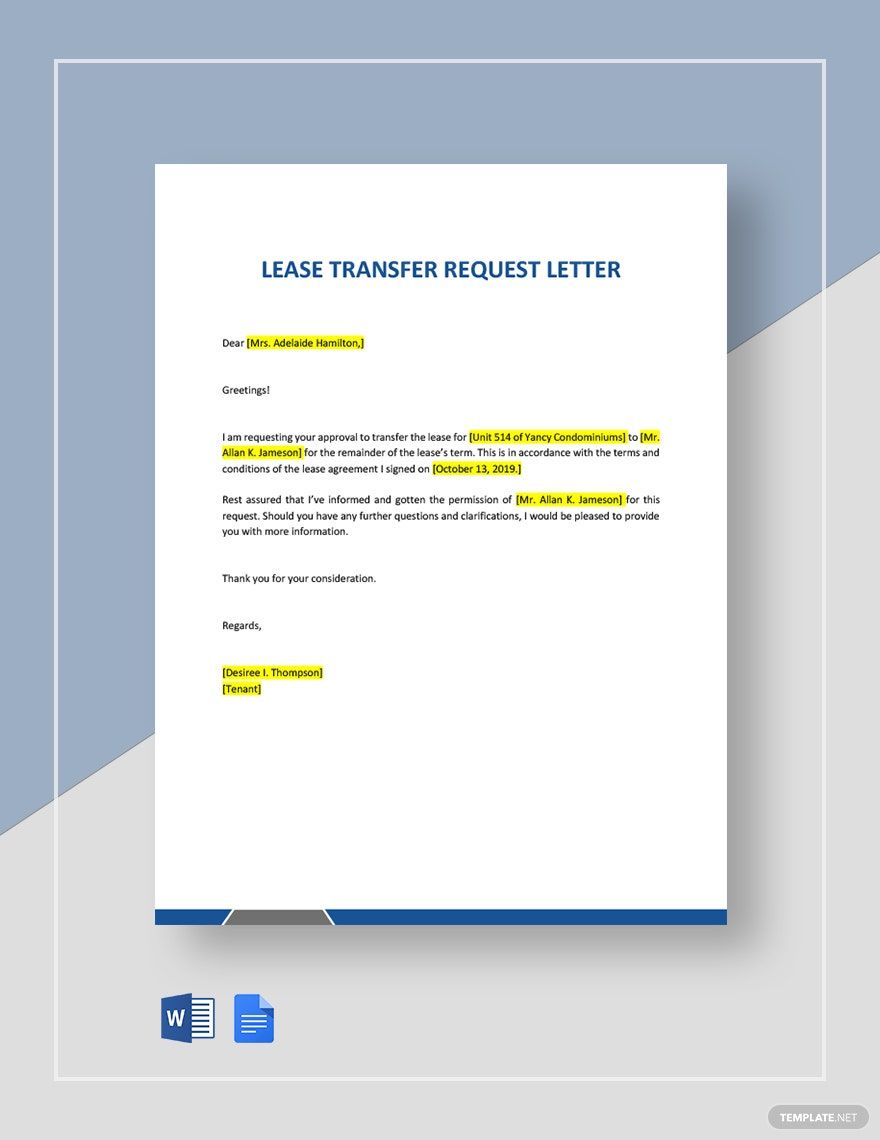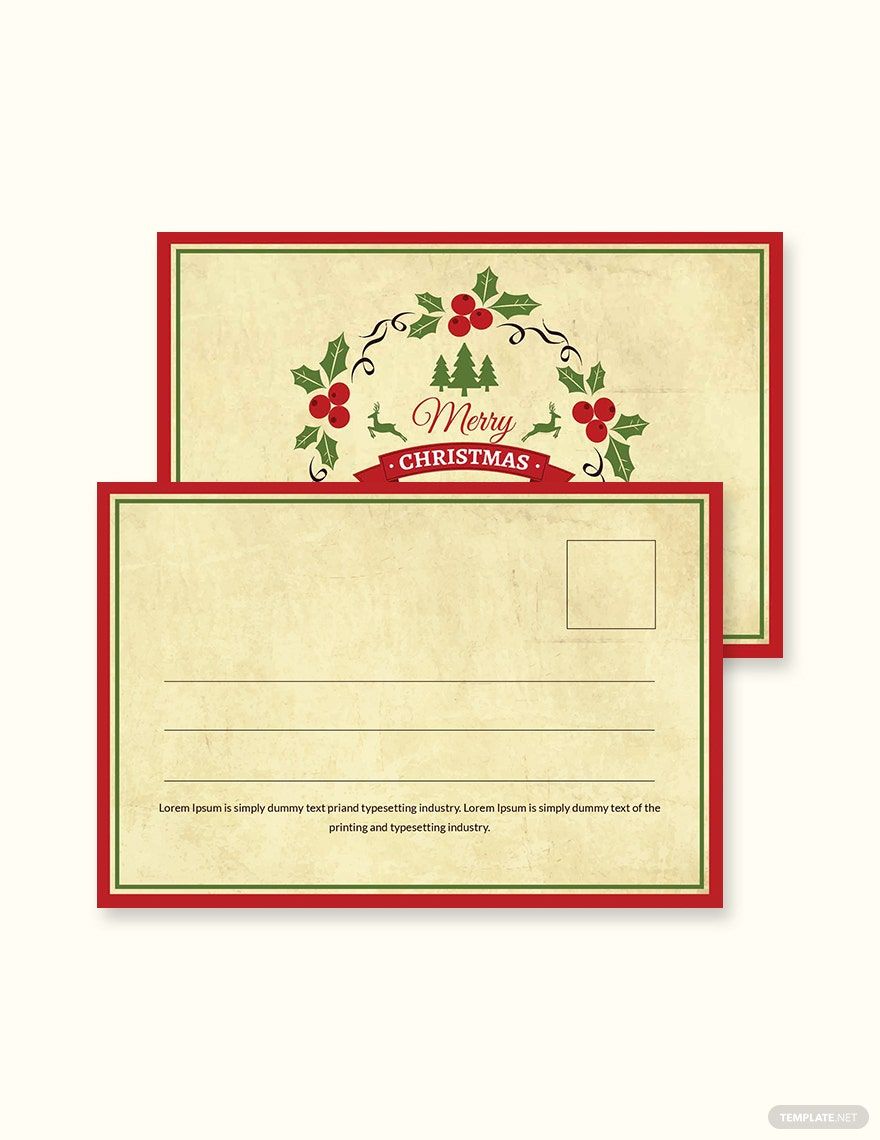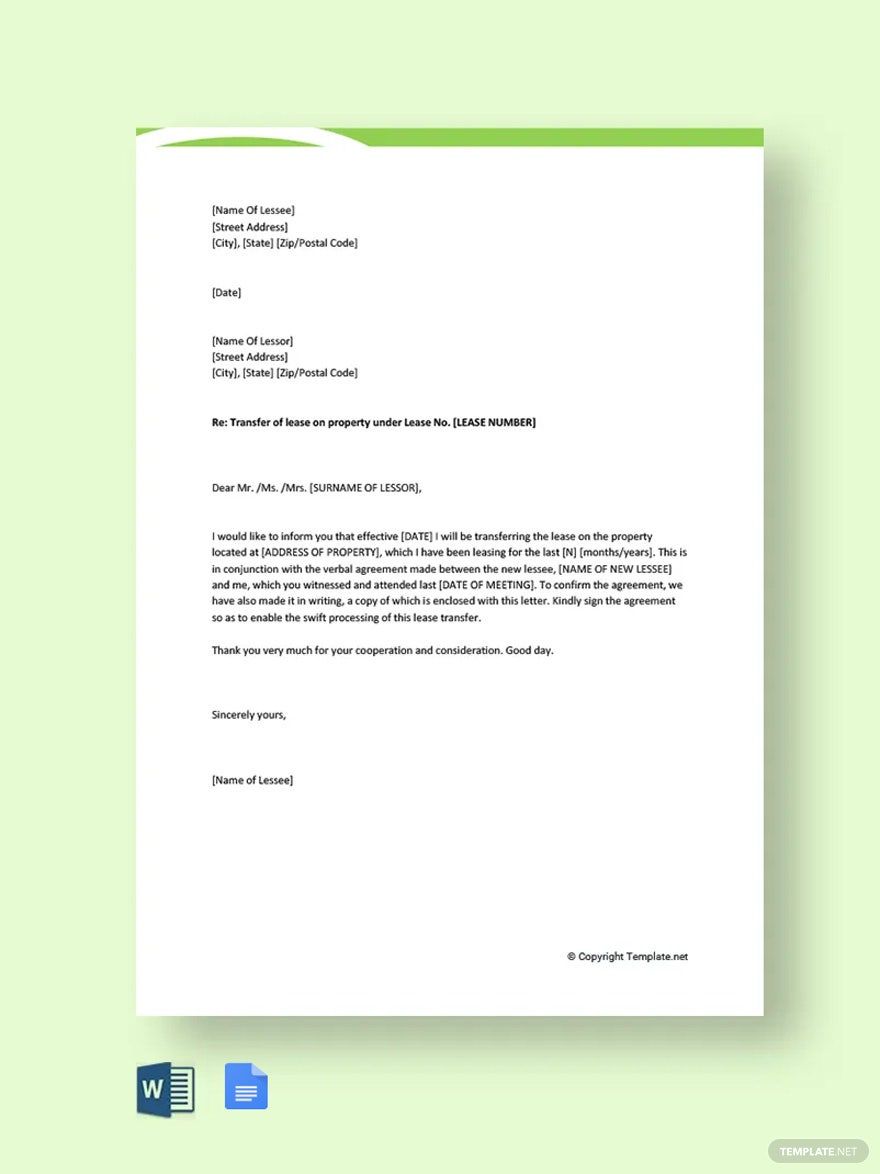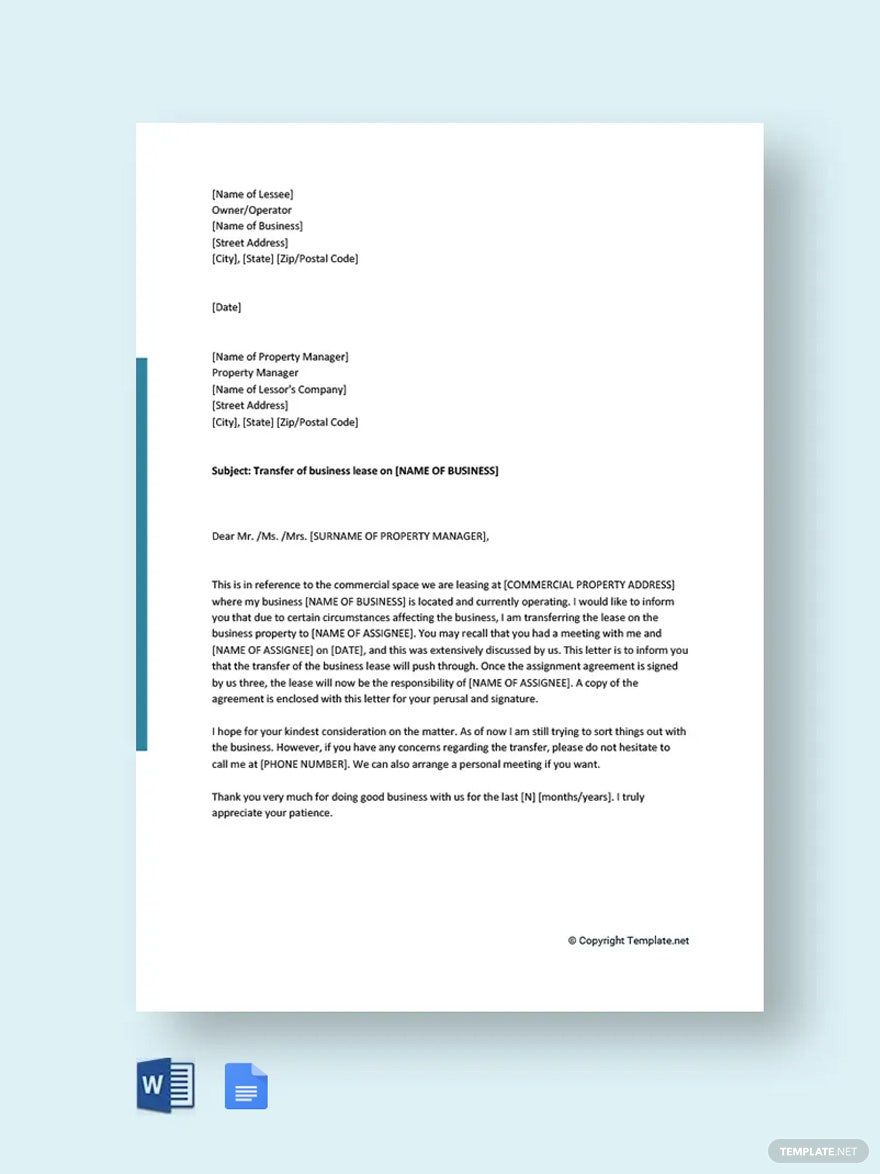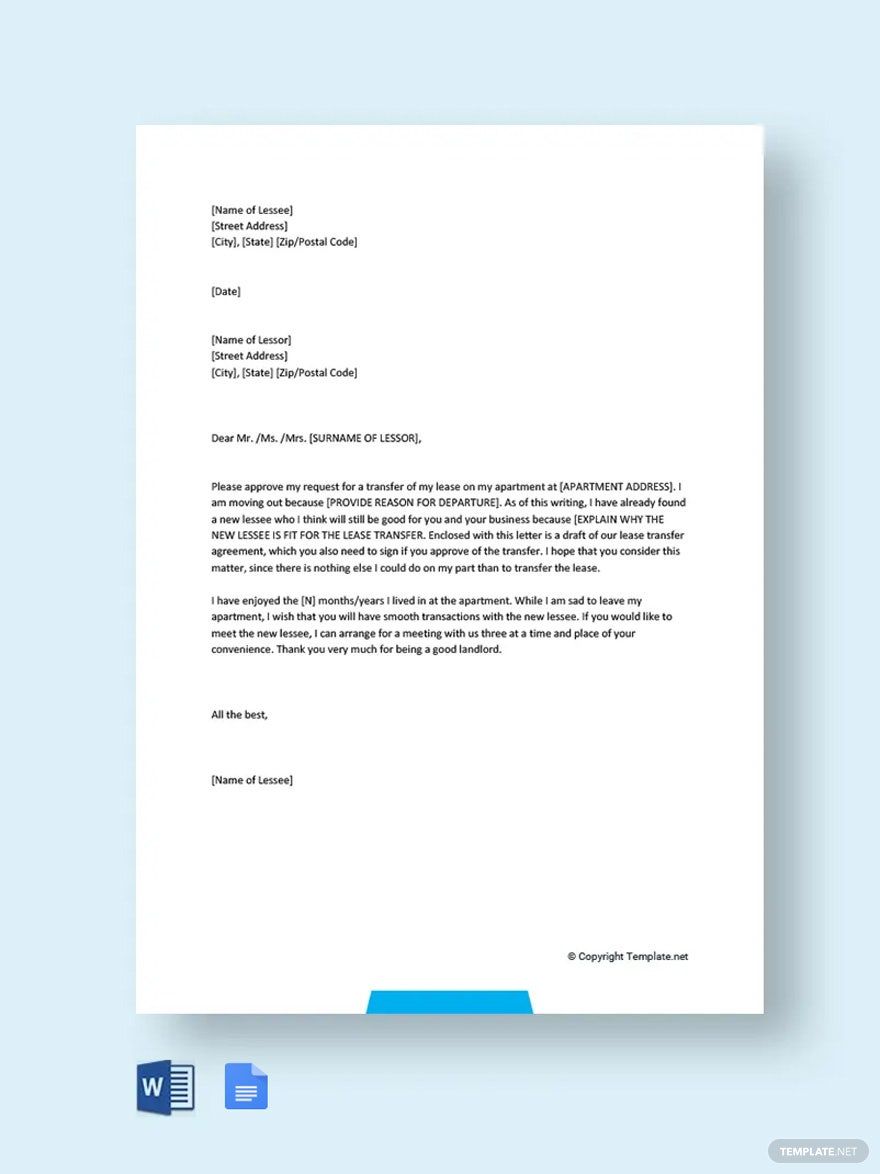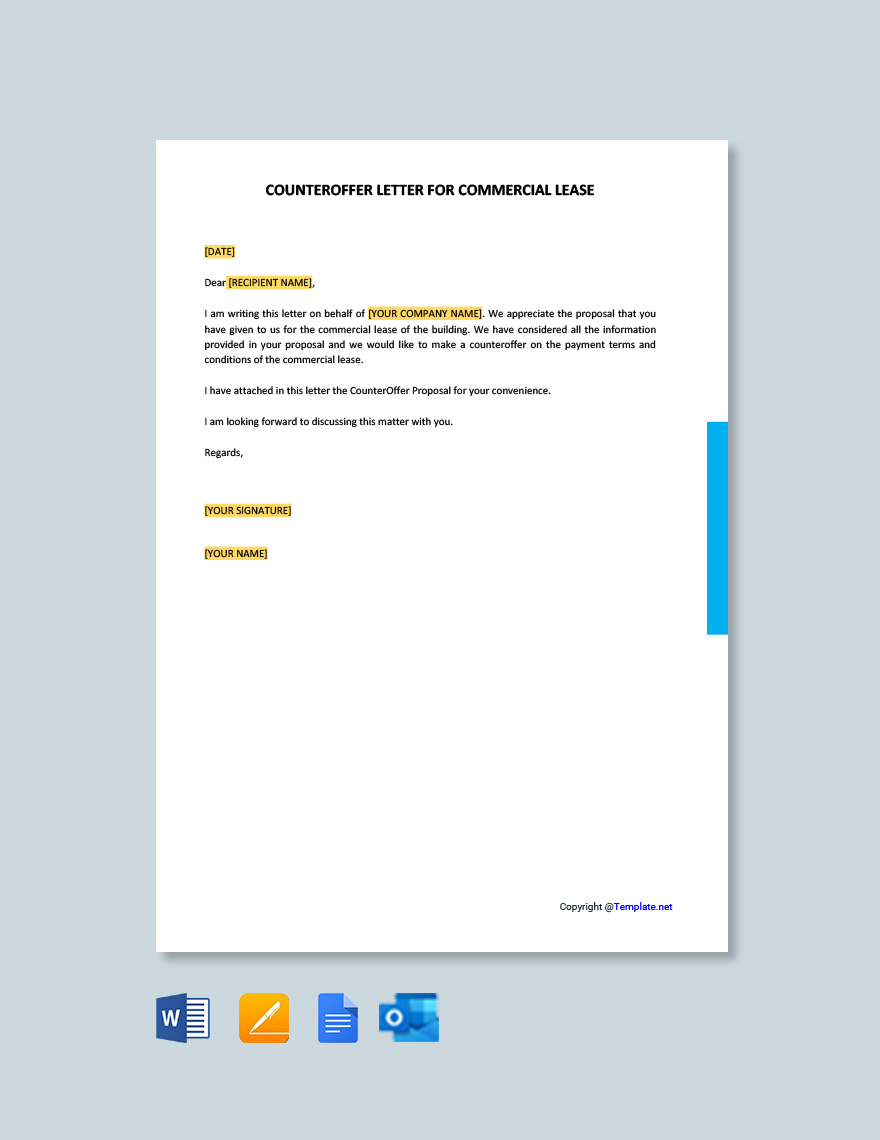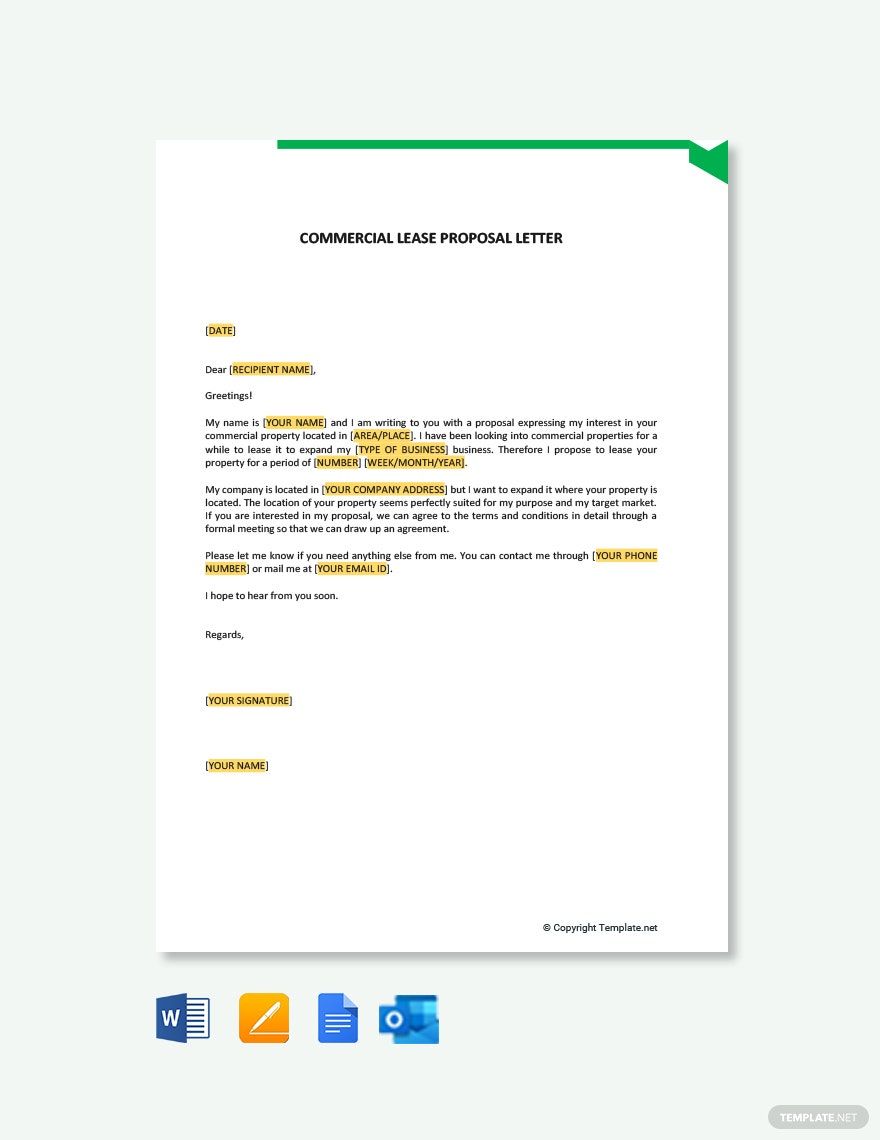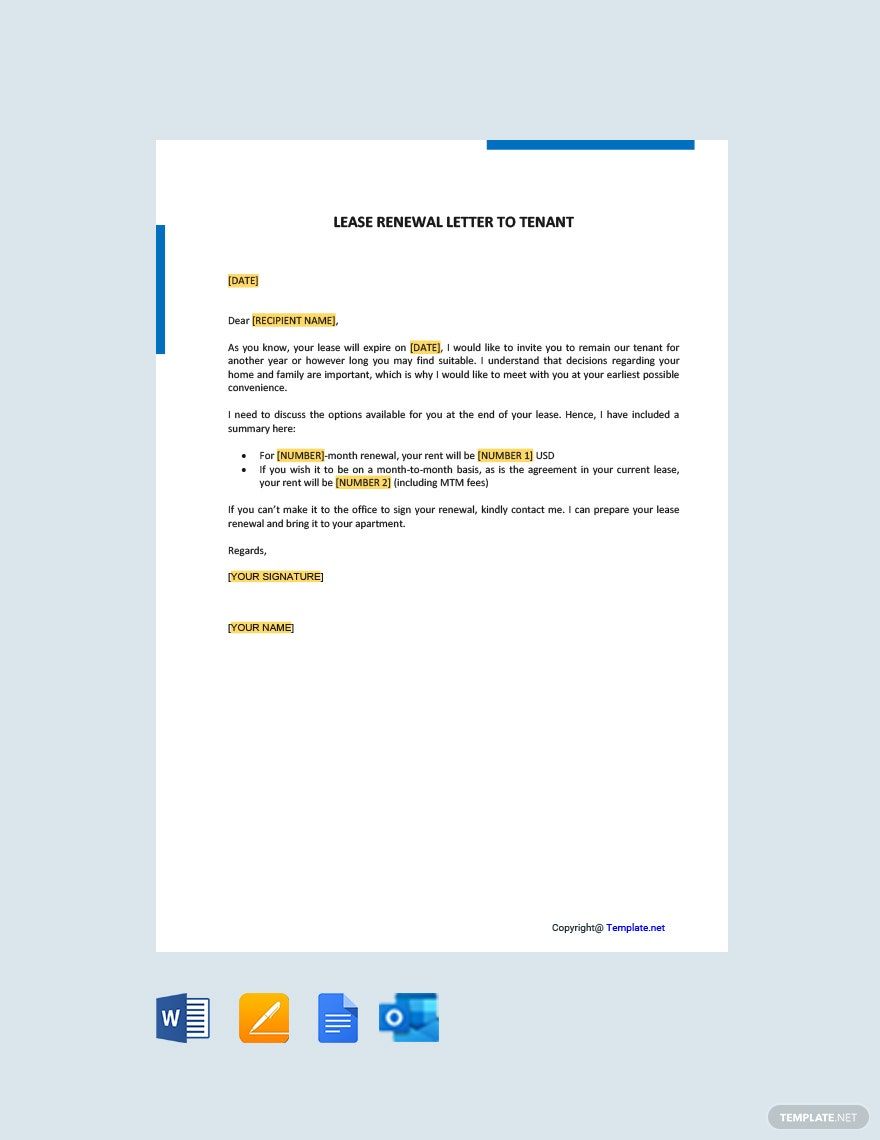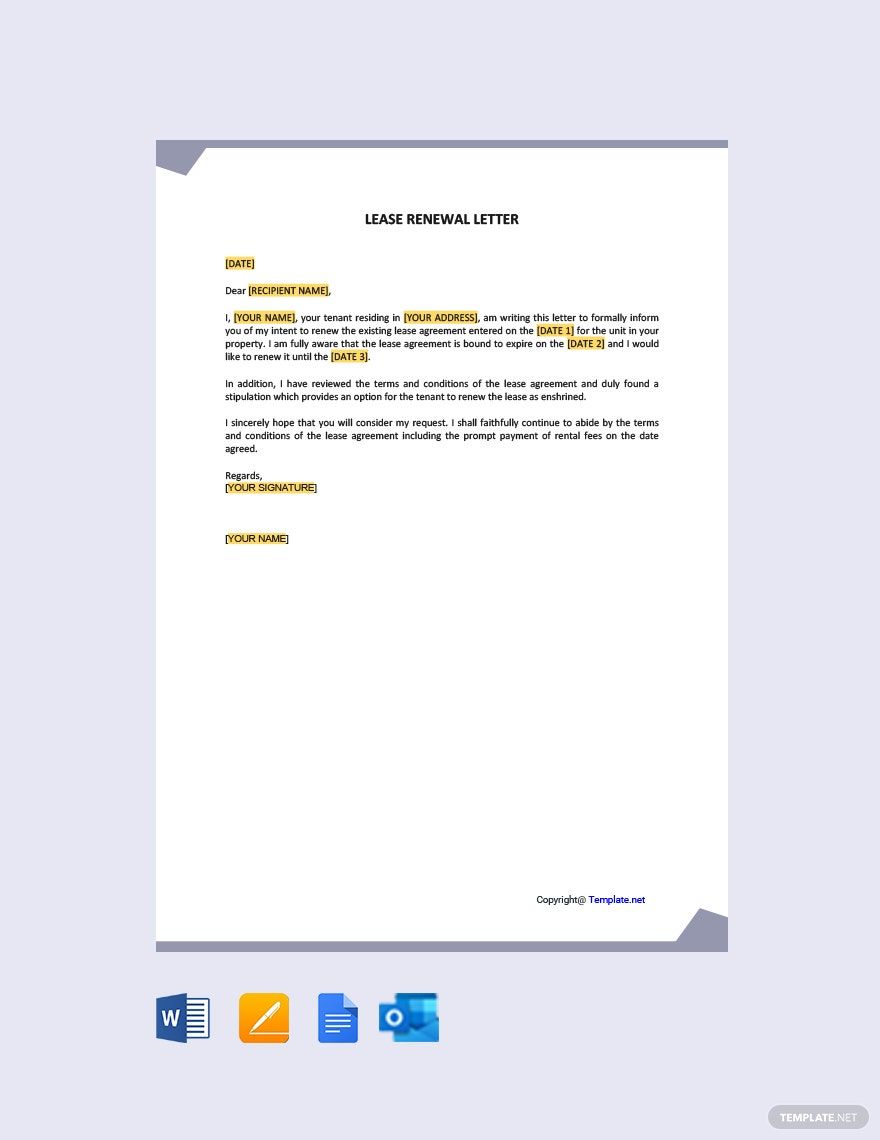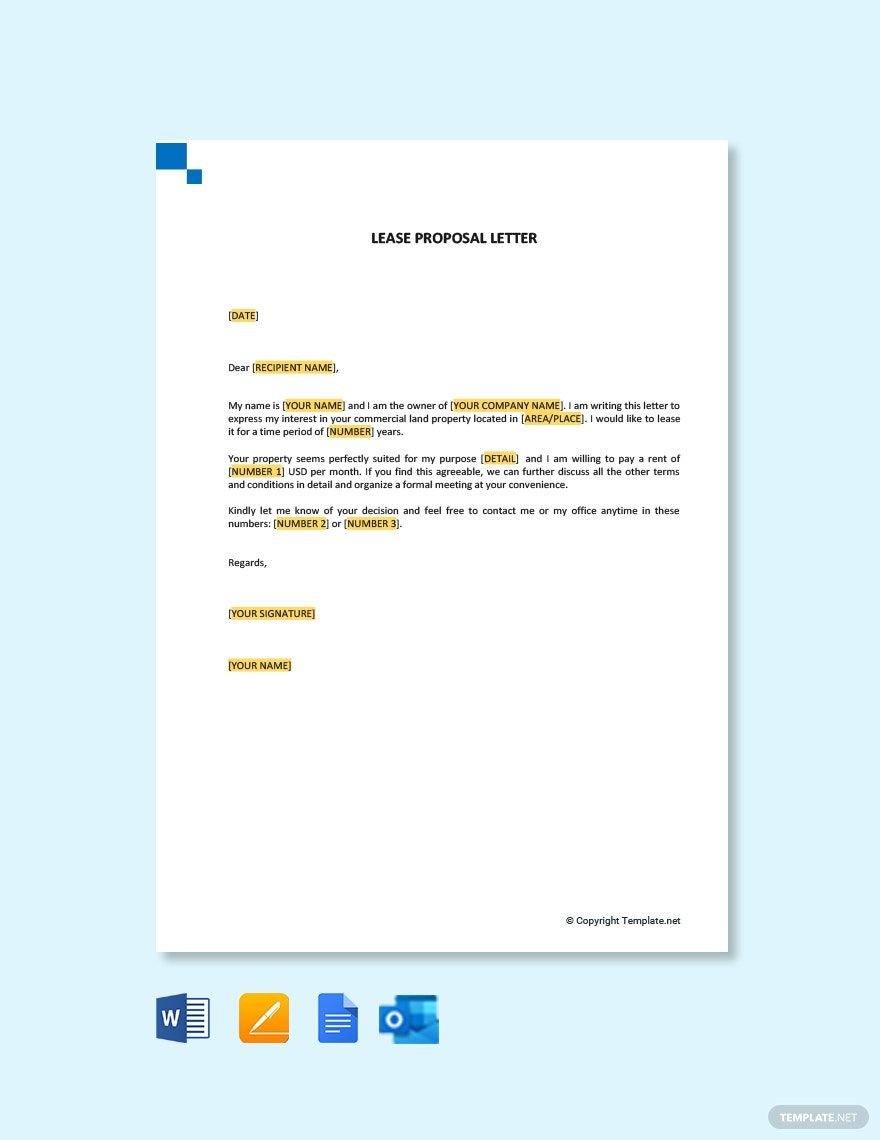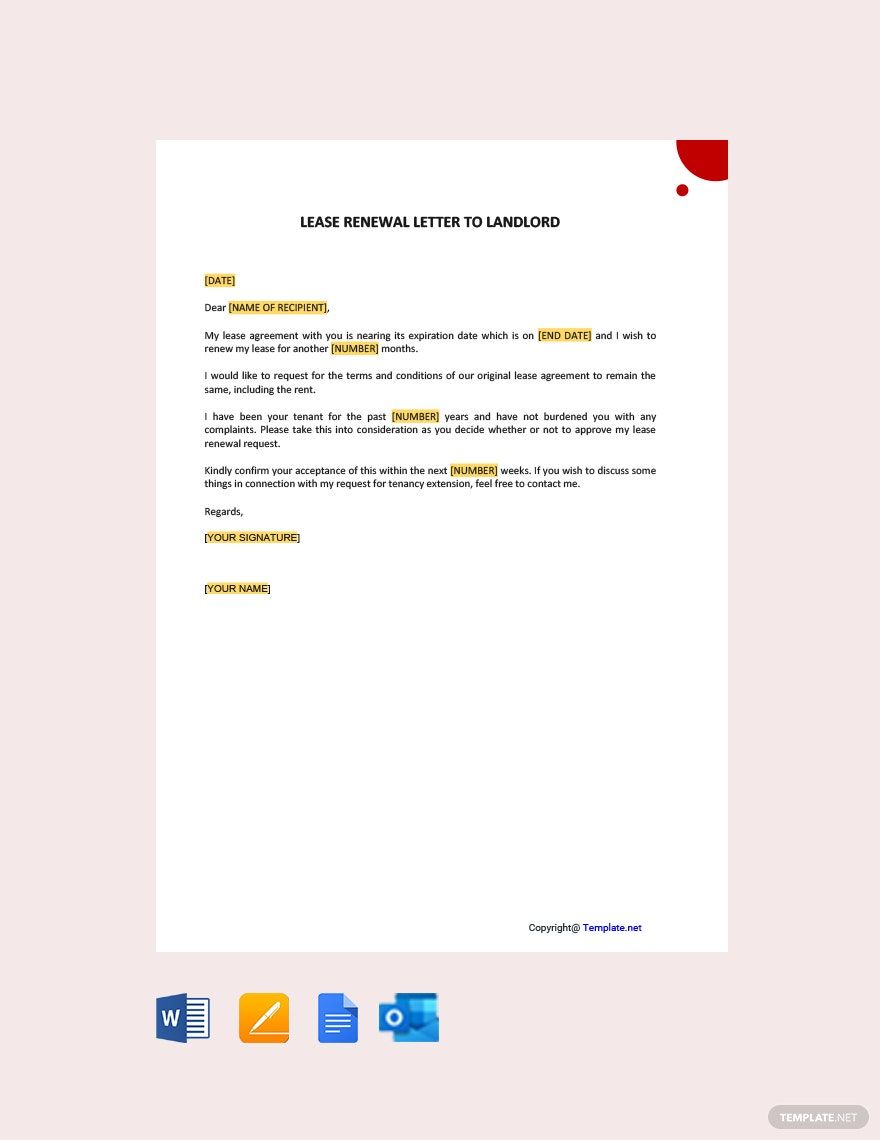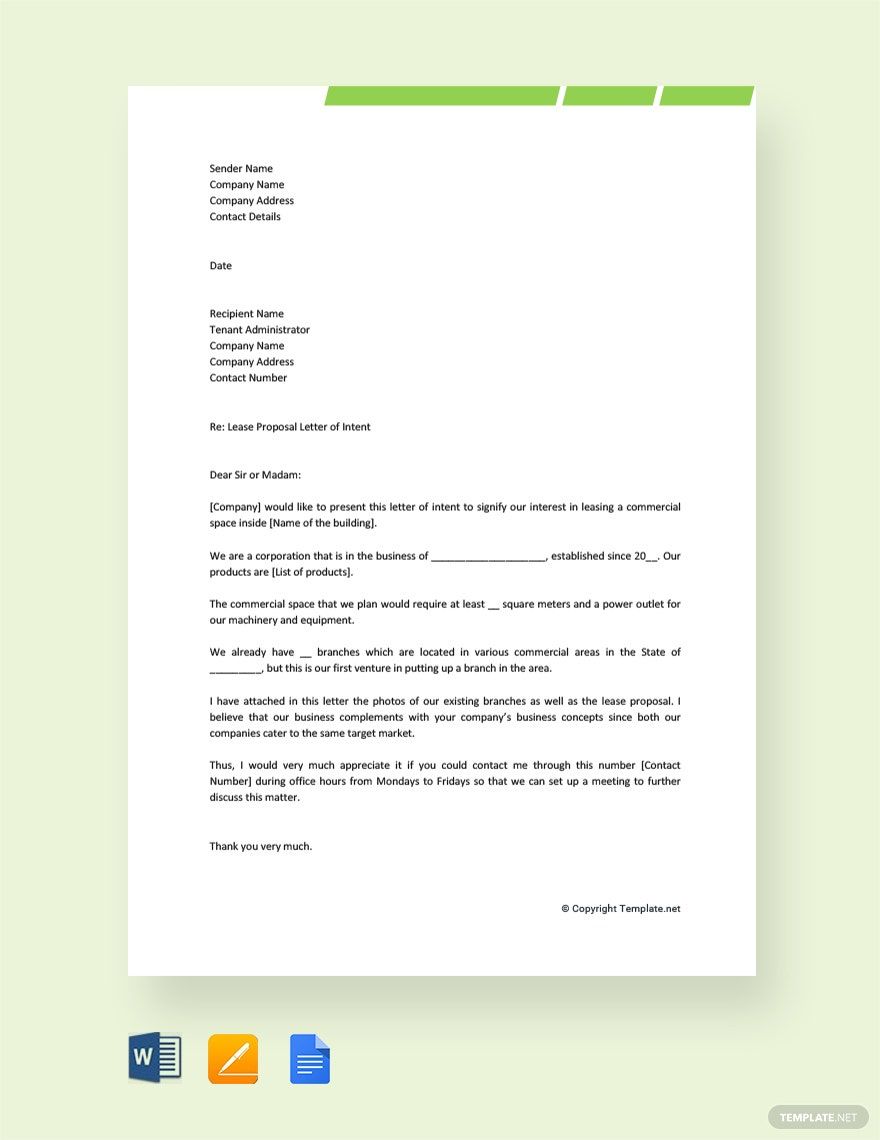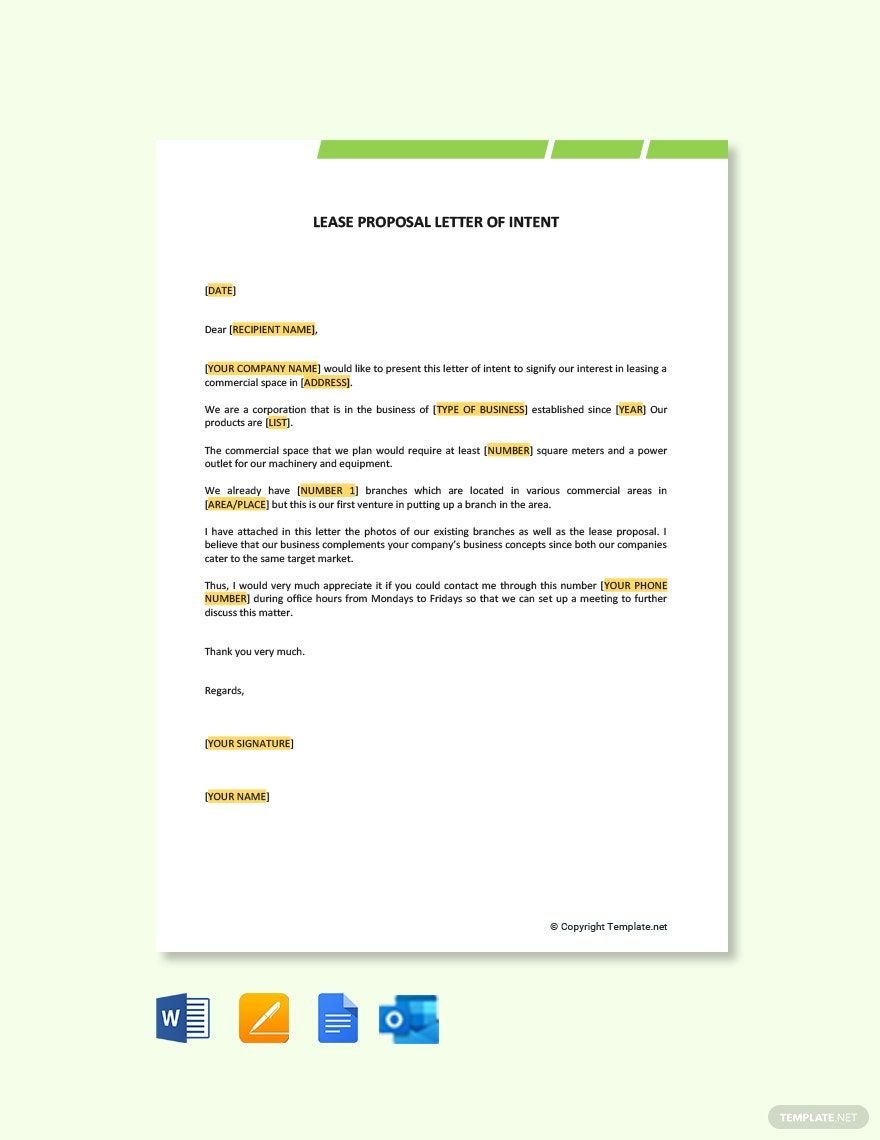Bring your Lease Communication to life with Lease Letter Templates from Template.net.
Keep your real estate management organized, streamline your communication process, and enhance tenant relations with Lease Letter Templates by Template.net. Perfect for property managers, landlords, and real estate professionals, these templates offer a comprehensive solution for efficiently handling lease agreements and related correspondence. Whether you need to send a professional welcome letter to a new tenant or issue a notice about a rental increase, these templates are tailored for various leasing scenarios. Each template conveniently includes key details you’ll need, such as rental terms, important dates, and contact information. With our easy-to-use templates, there's no need for legal or design expertise. Enjoy the benefits of professional-grade documents that can be printed or sent digitally.
Discover the many Lease Letter Templates we have on hand, crafted to meet the diverse needs of the rental industry. Simply select the template that suits your needs, swap in relevant tenant details, and tweak the fonts and colors to match your branding. For advanced touches, effortlessly drag-and-drop icons or use AI-powered text tools to add personalized notes. The possibilities are endless and skill-free, allowing even those unfamiliar with design software to create polished communications. Our library is frequently updated with new designs to ensure you have access to the latest styles. When you’re finished, download or share them via email, link, or print for seamless distribution across multiple channels.
